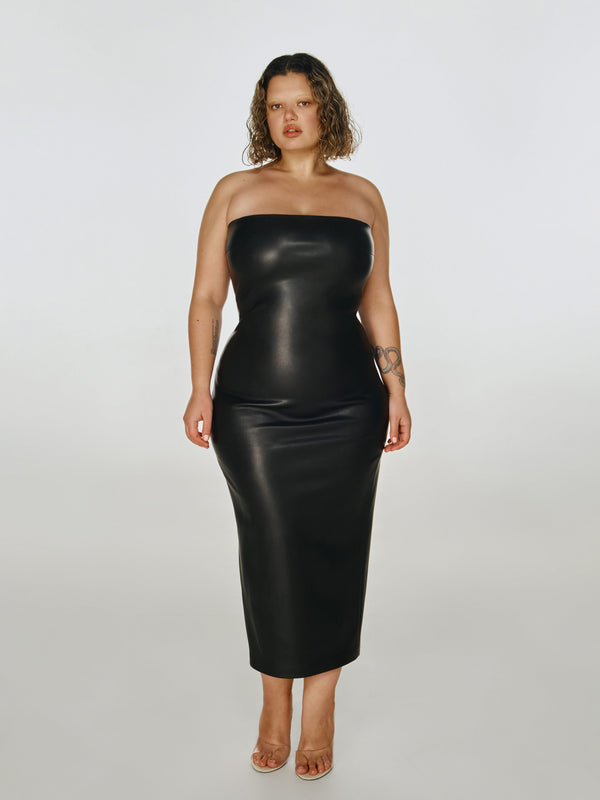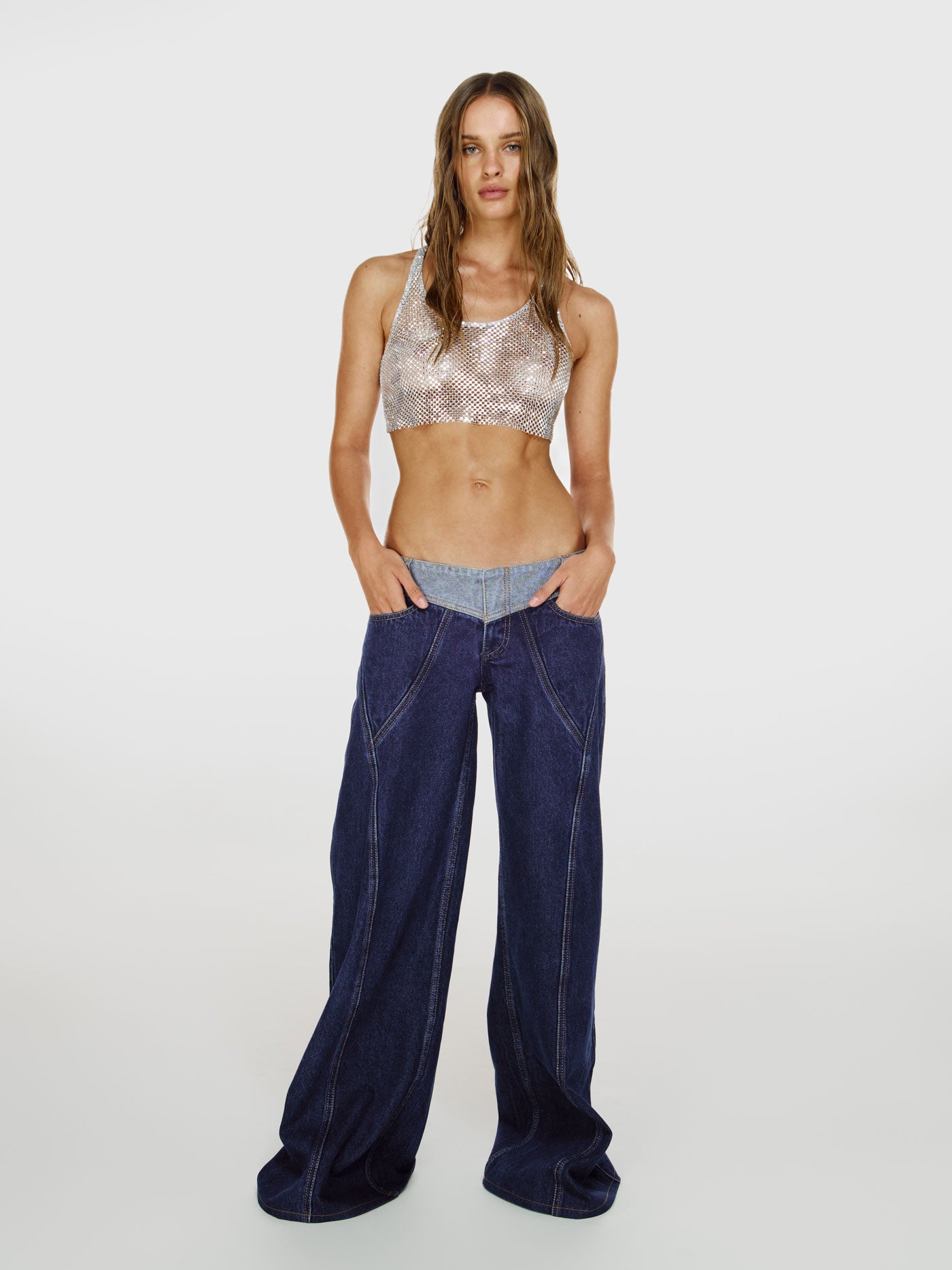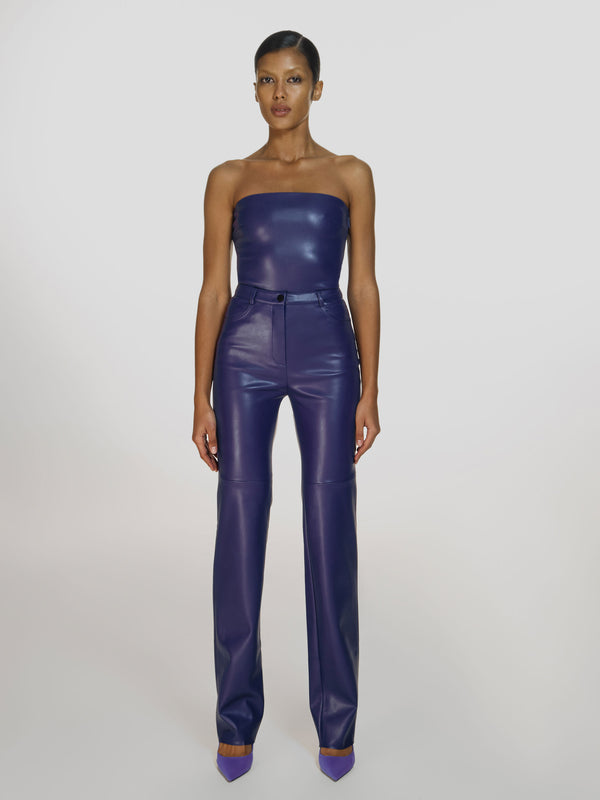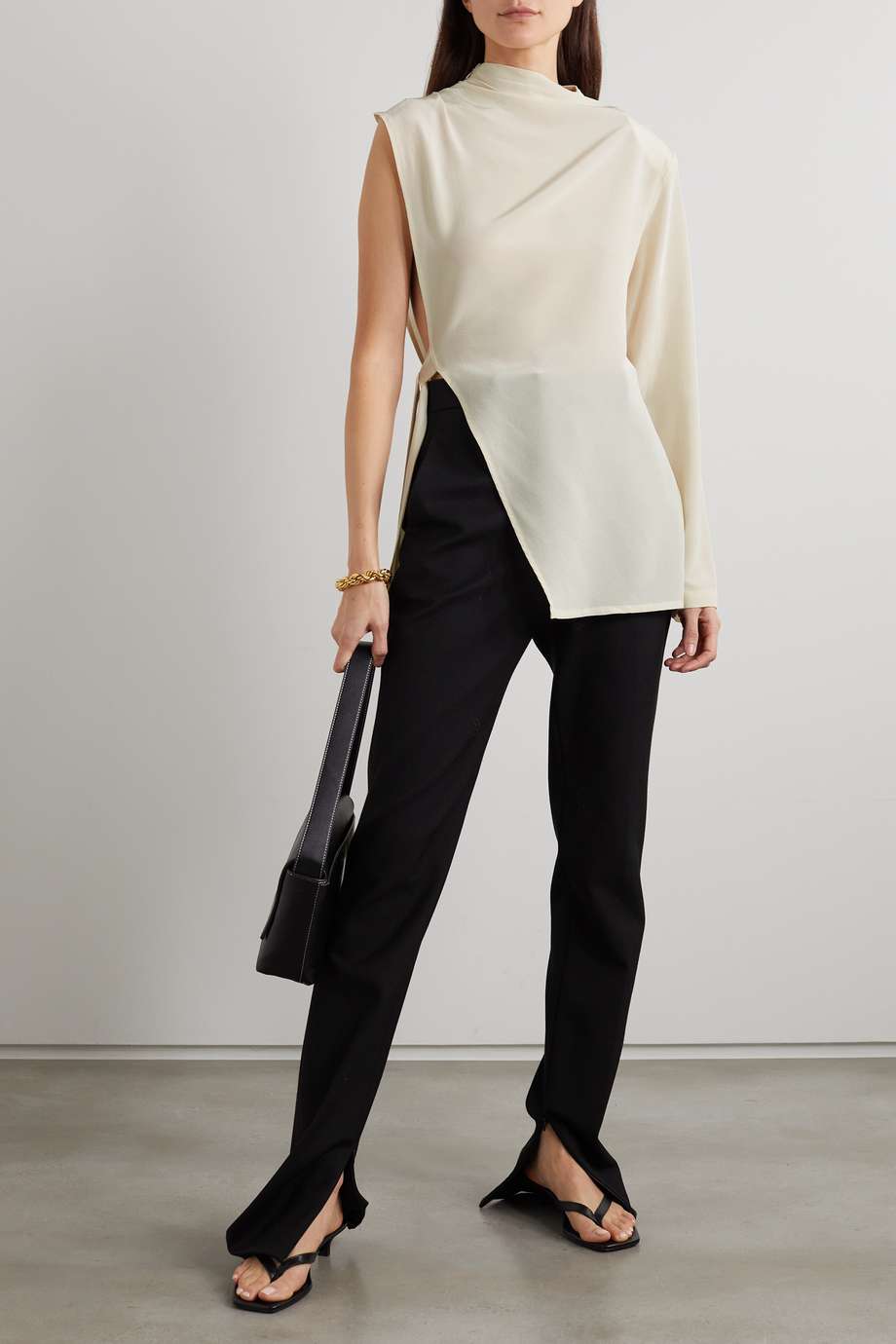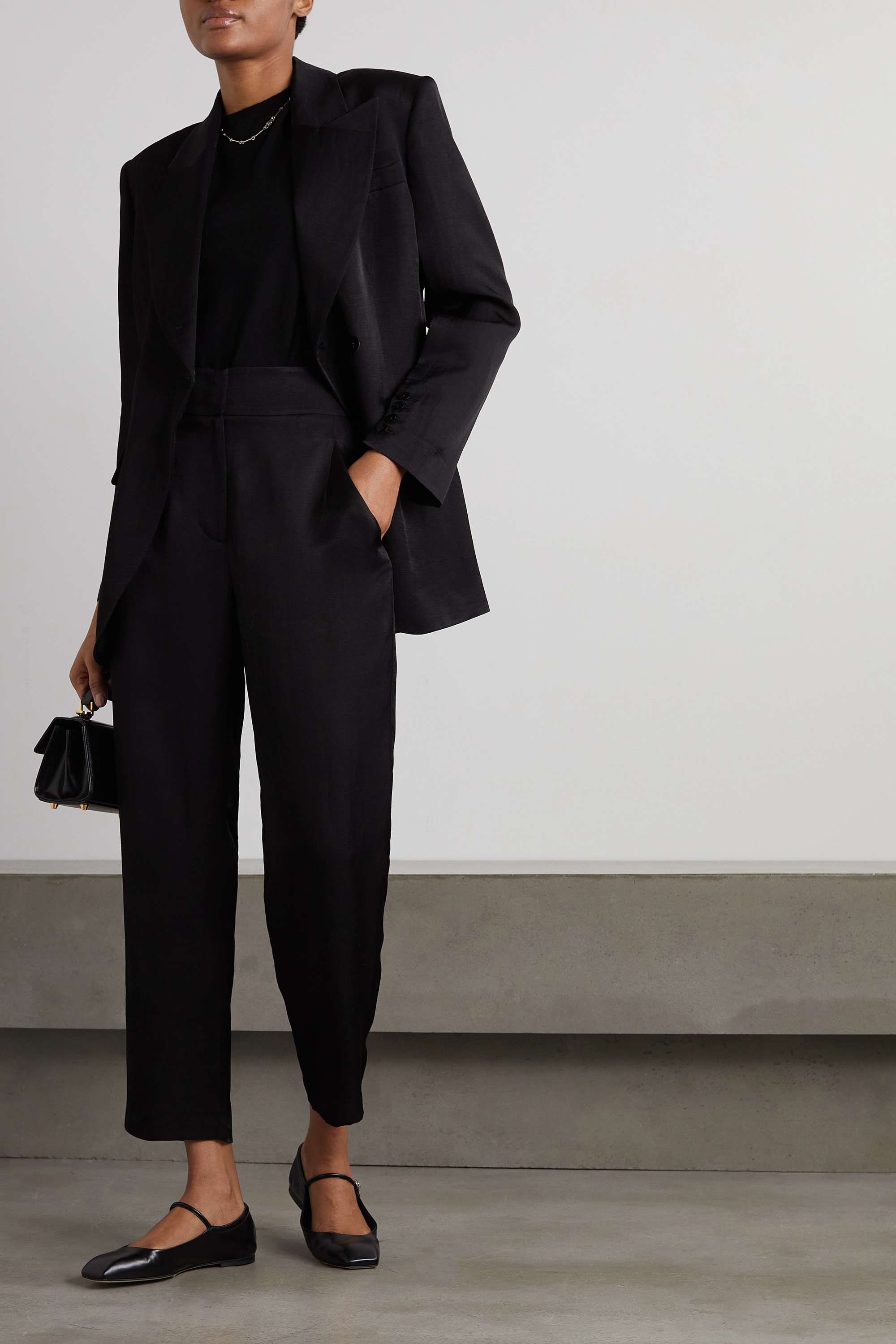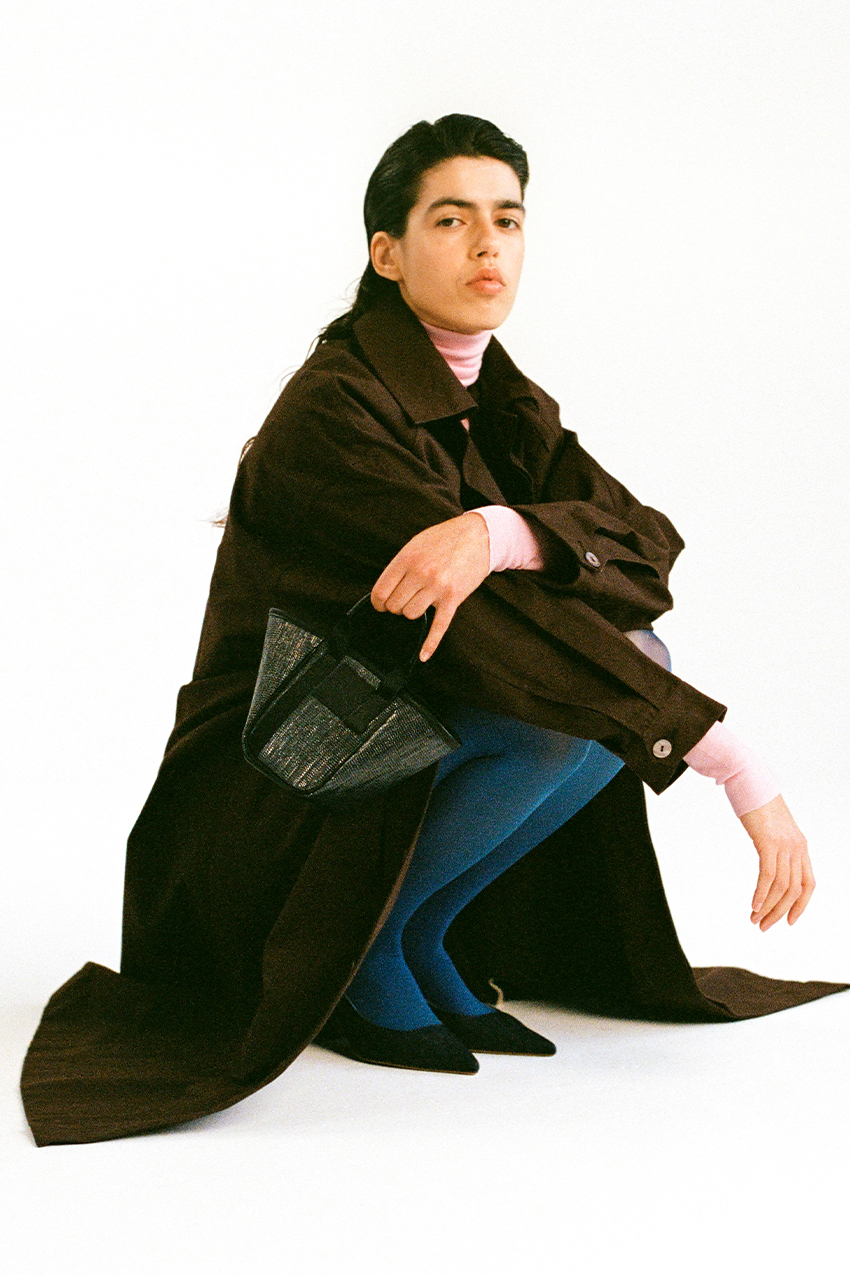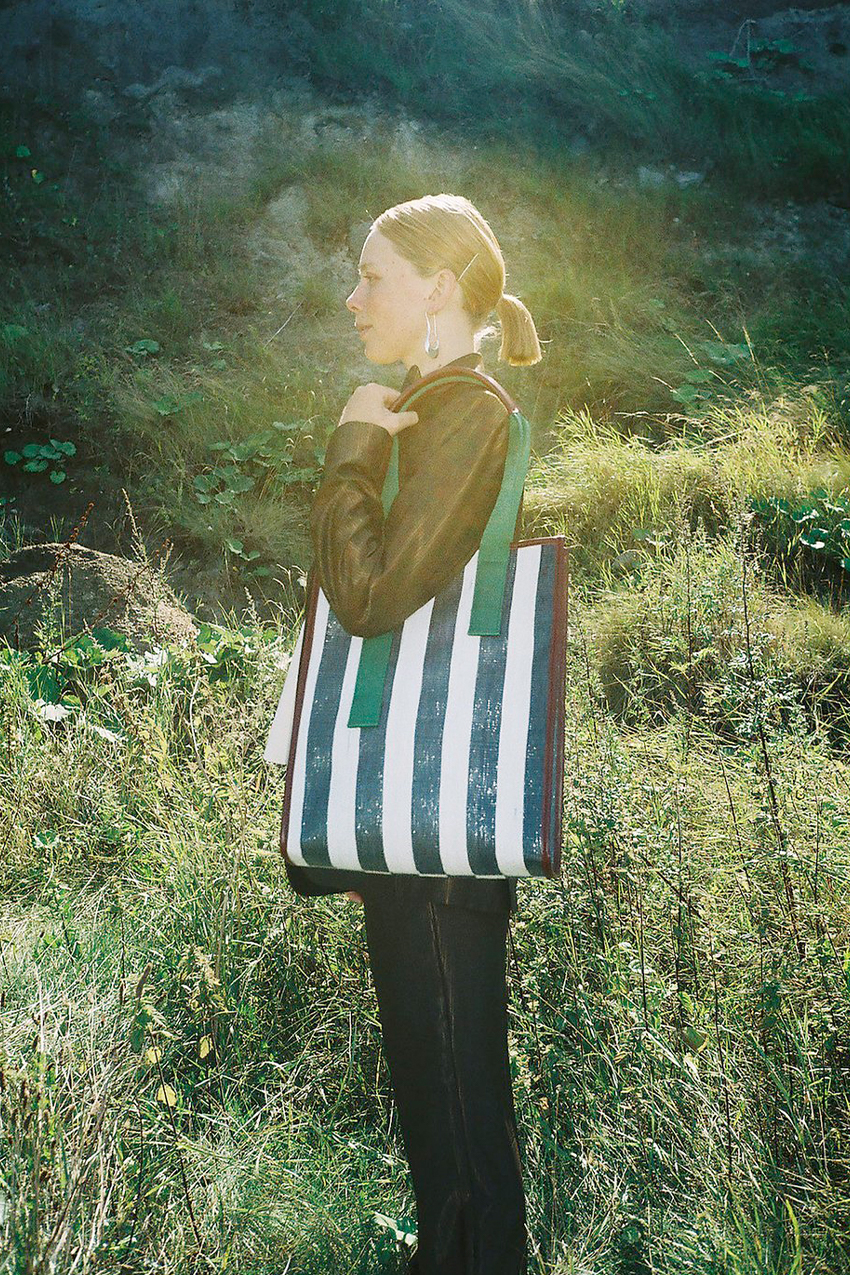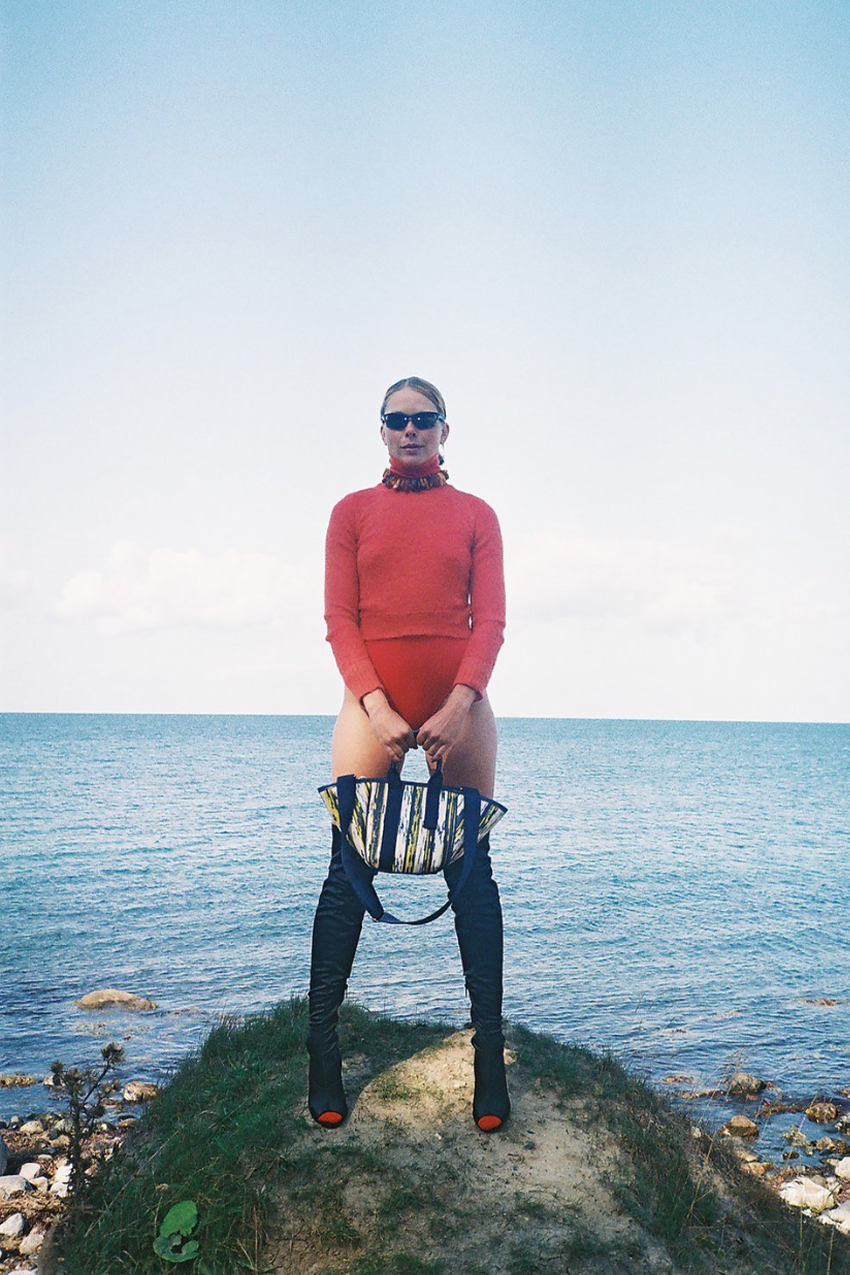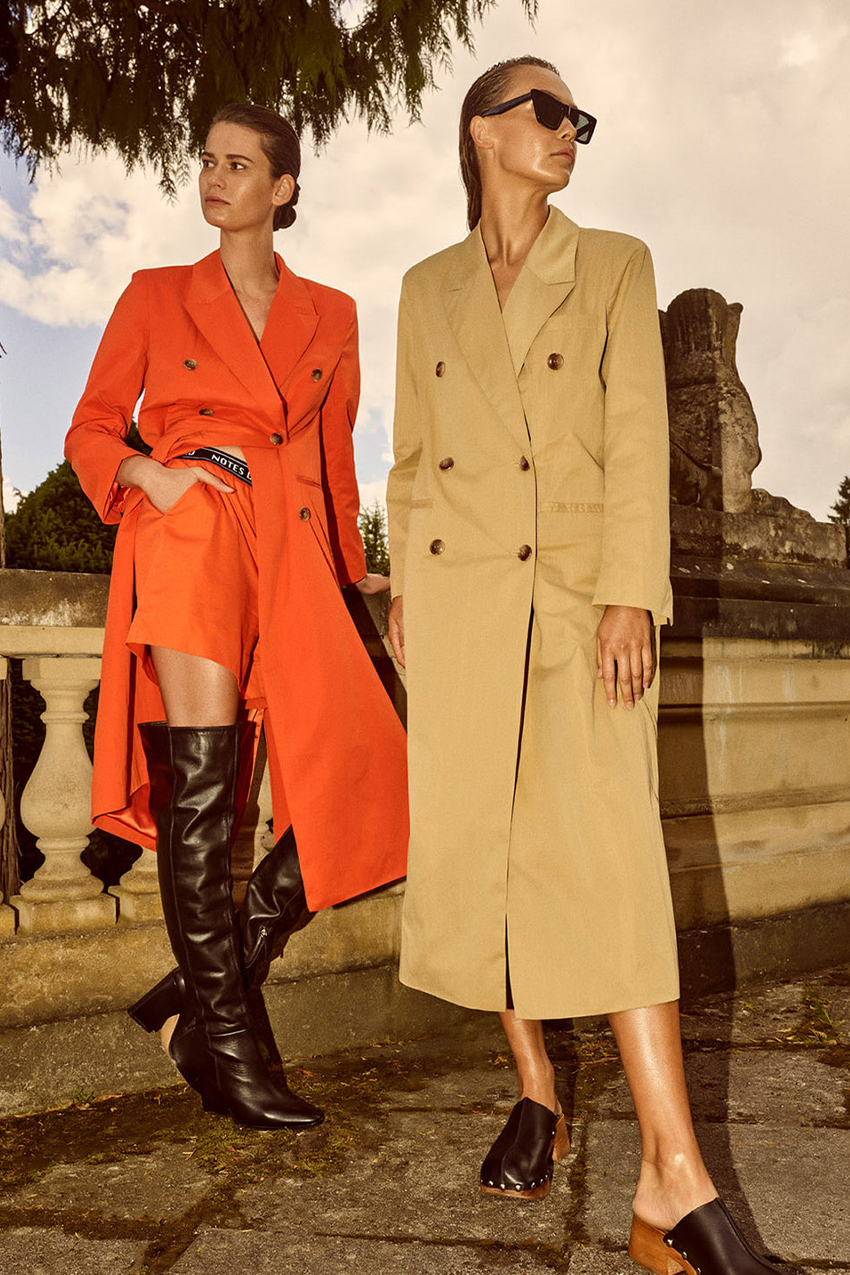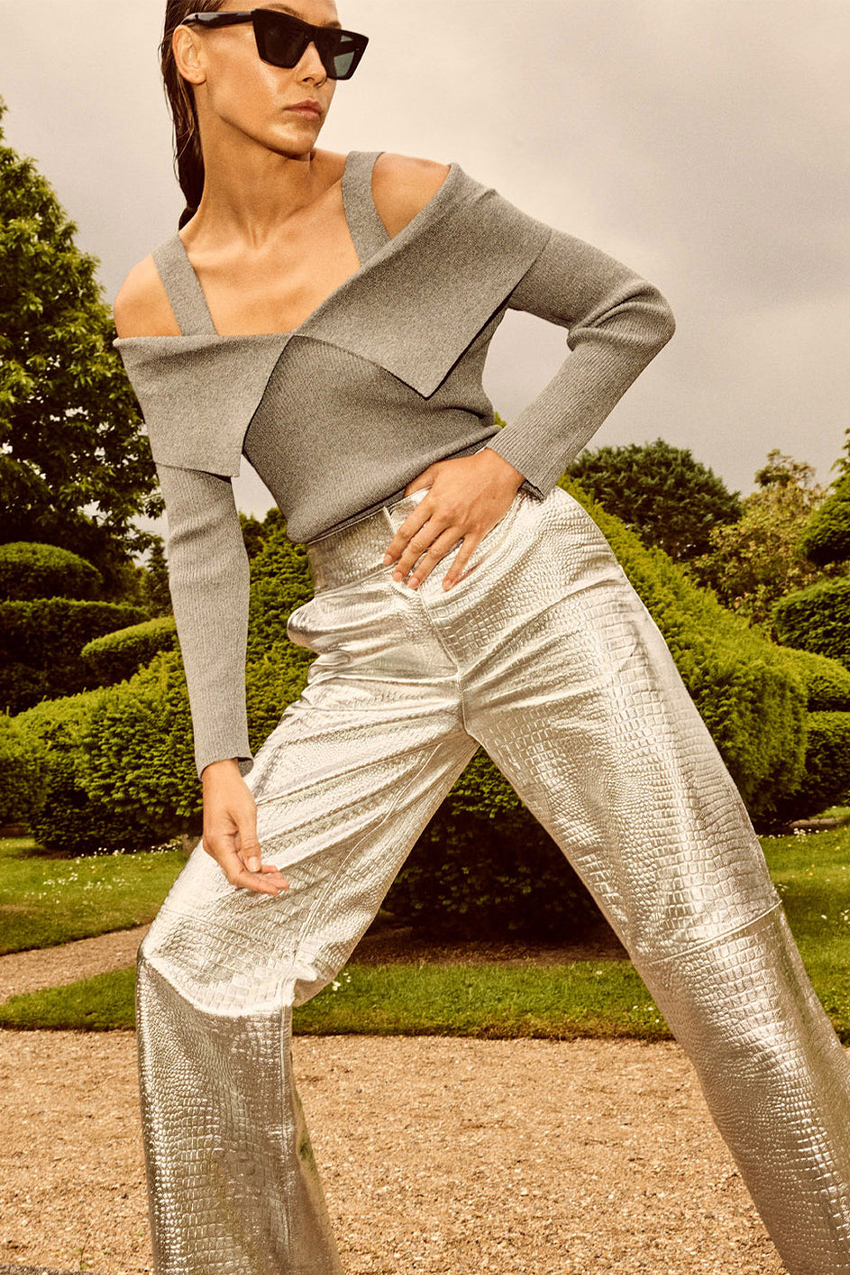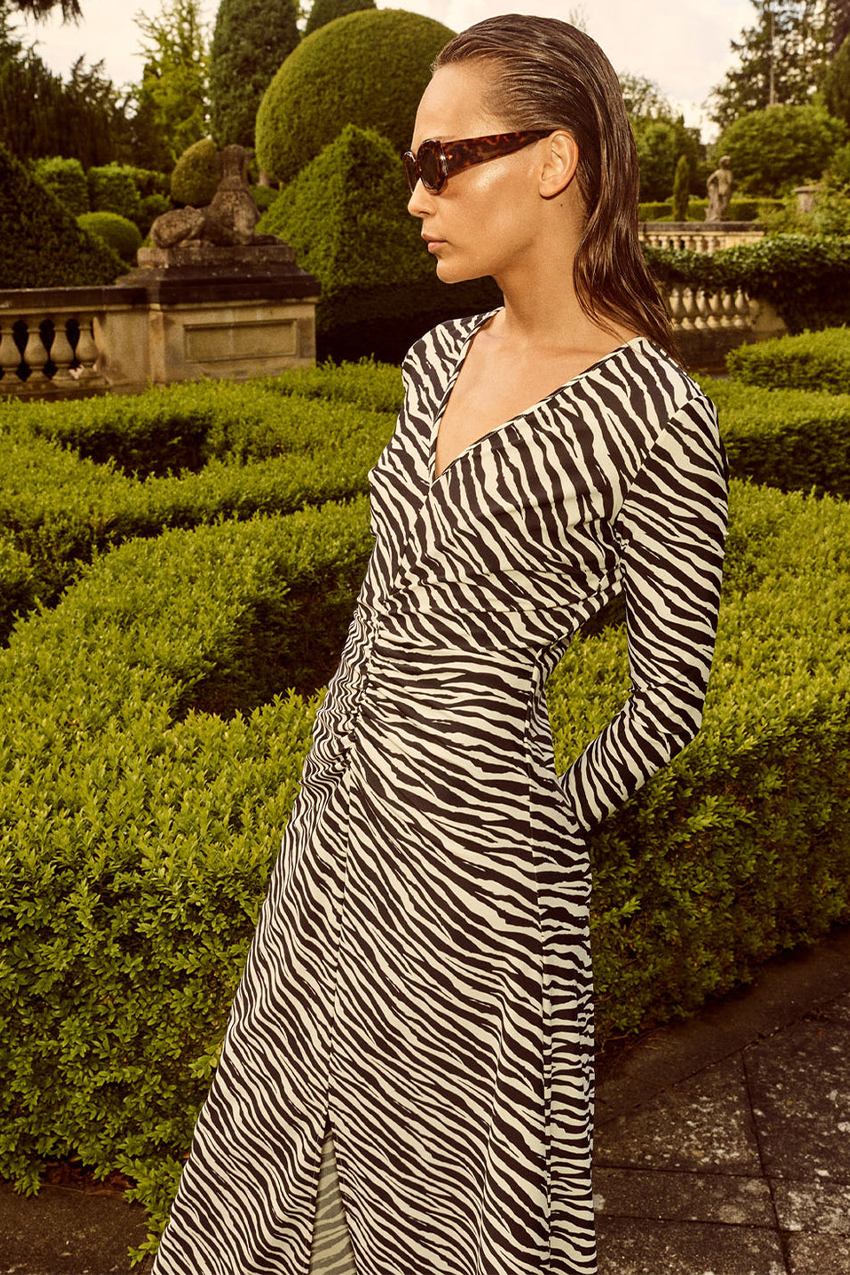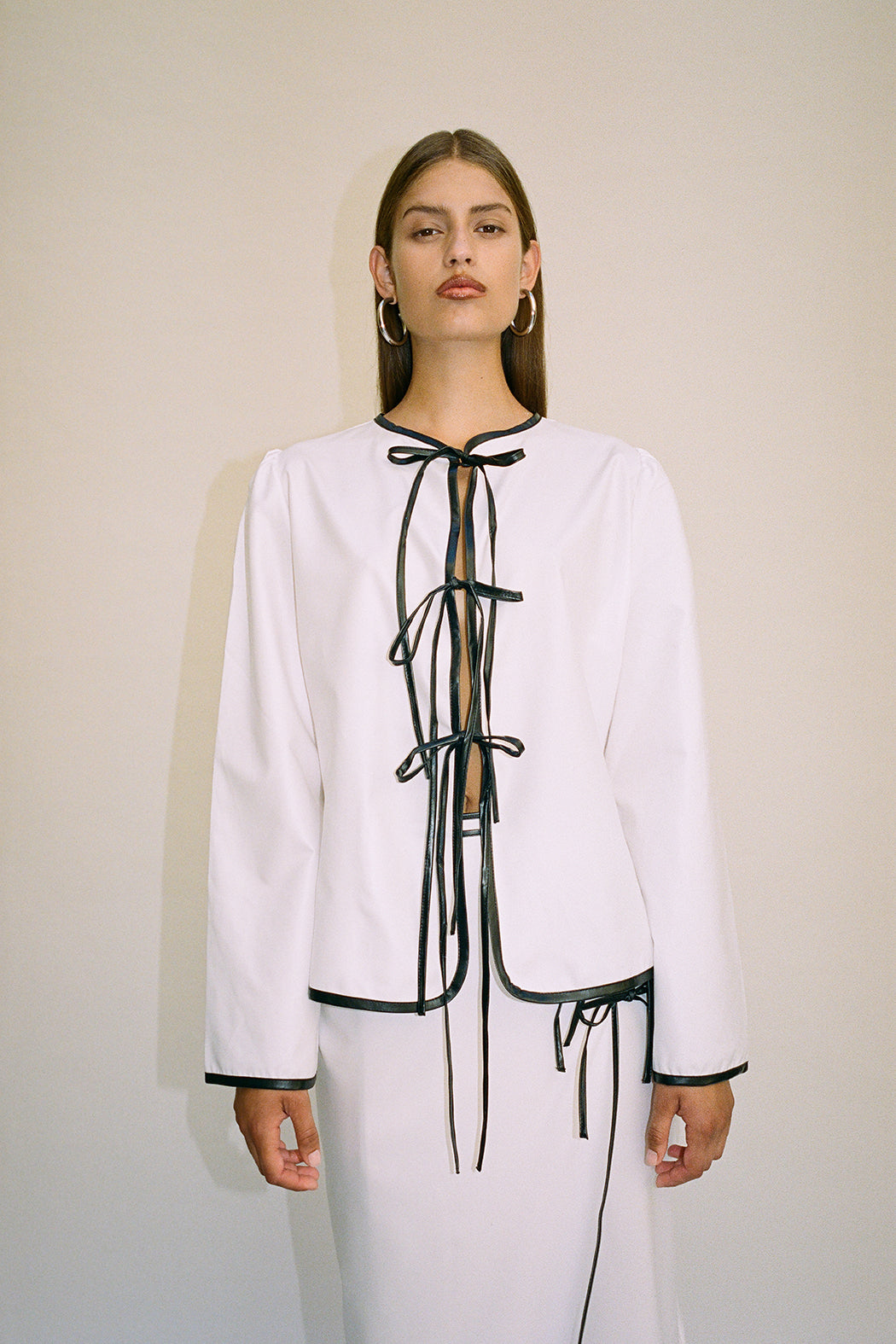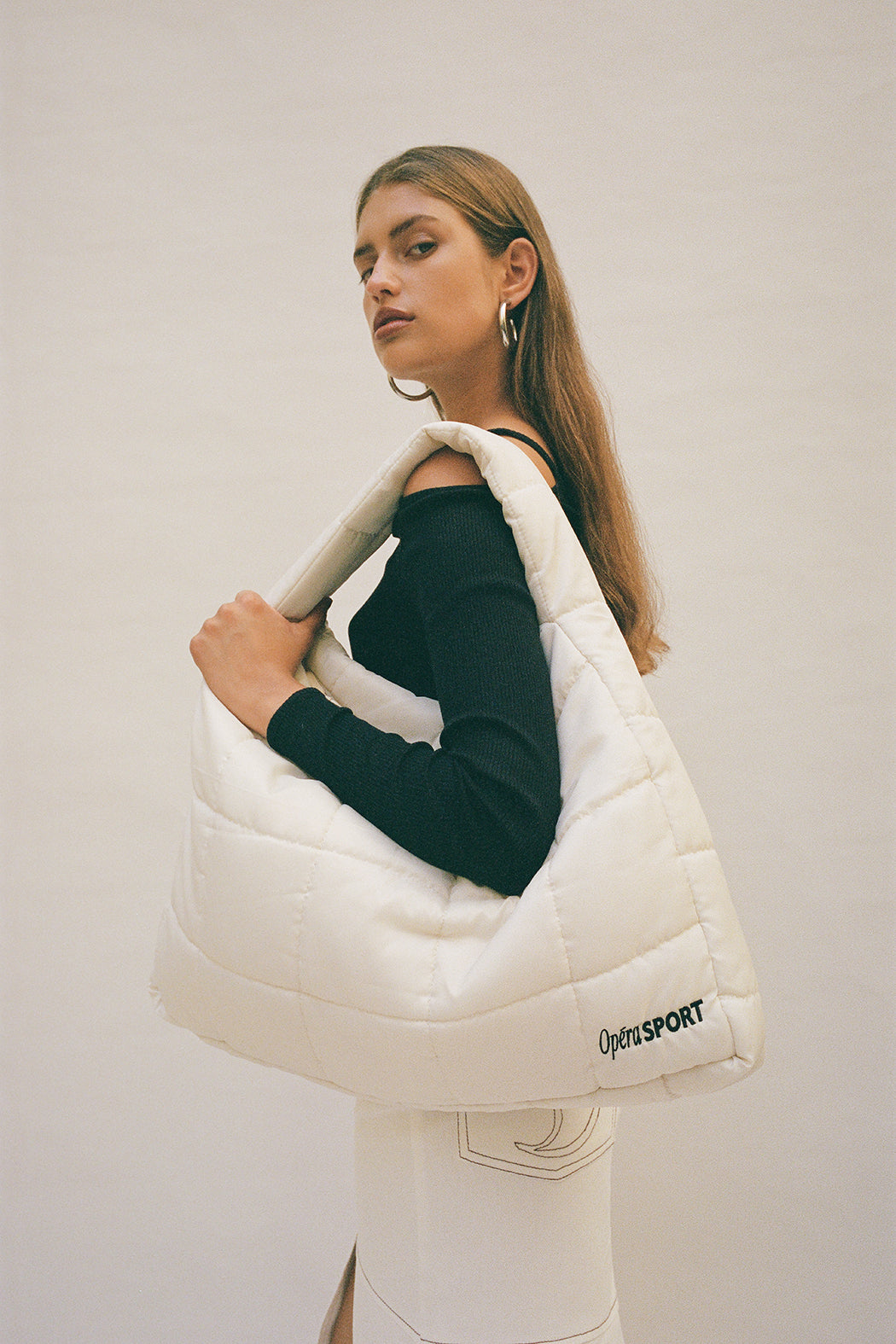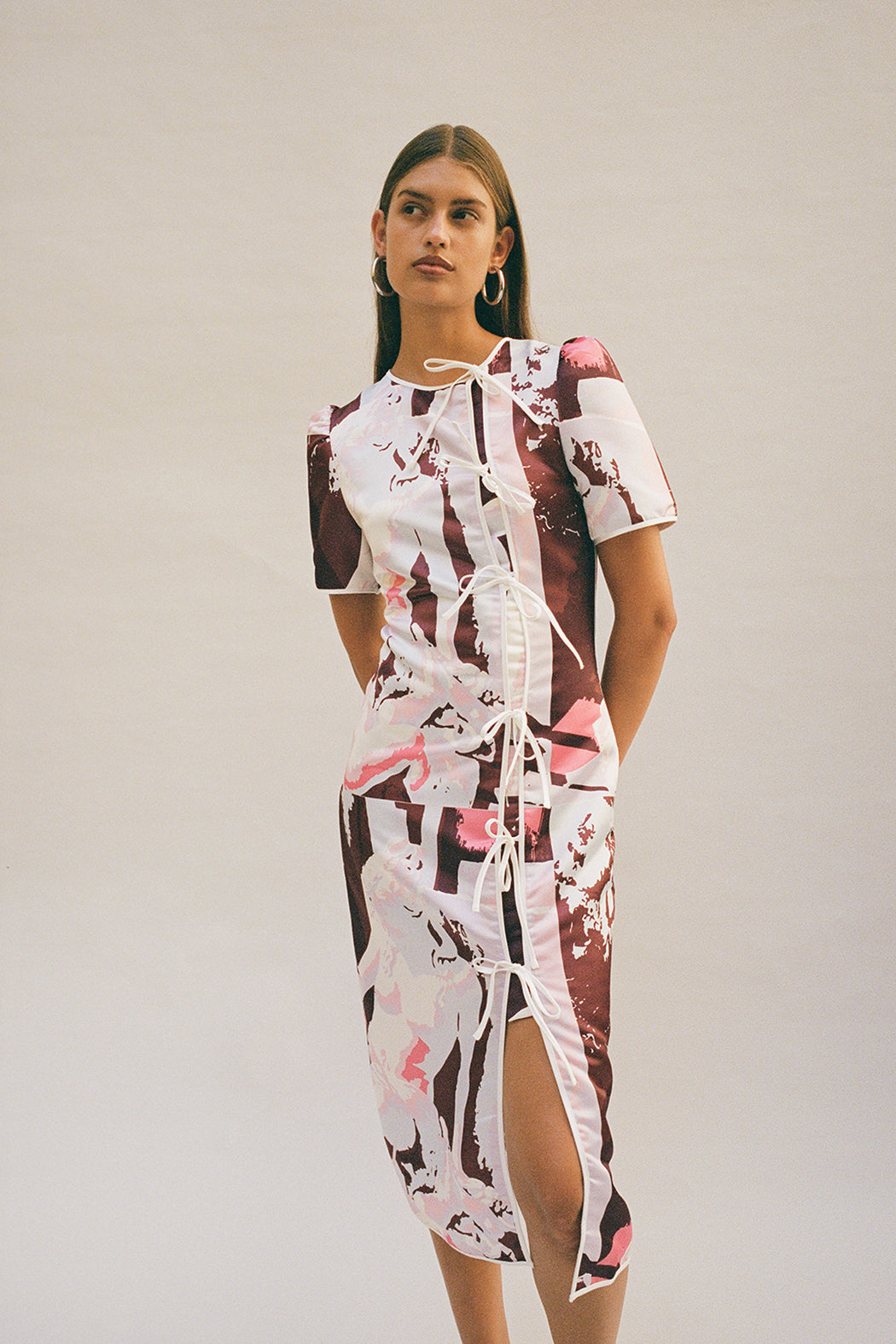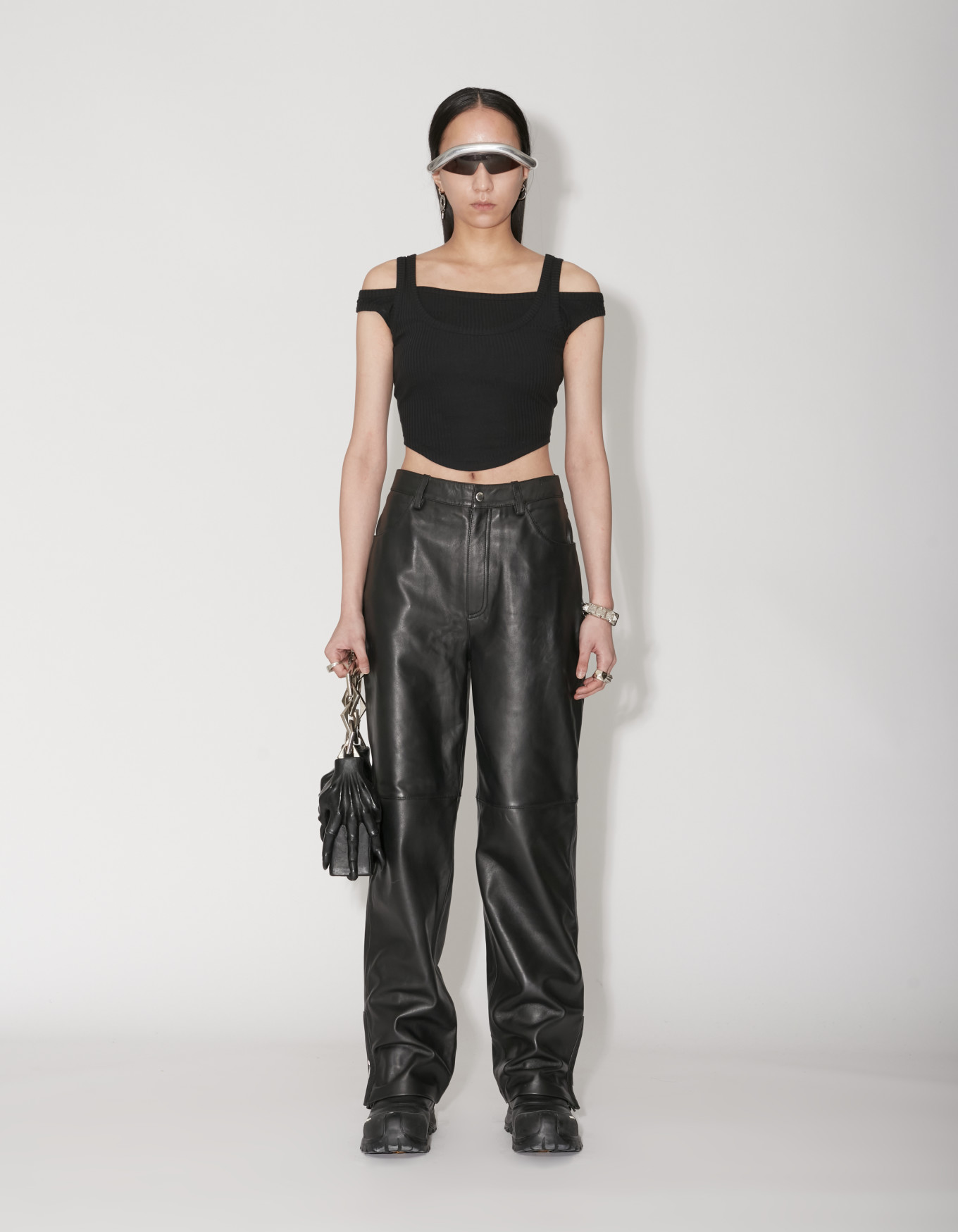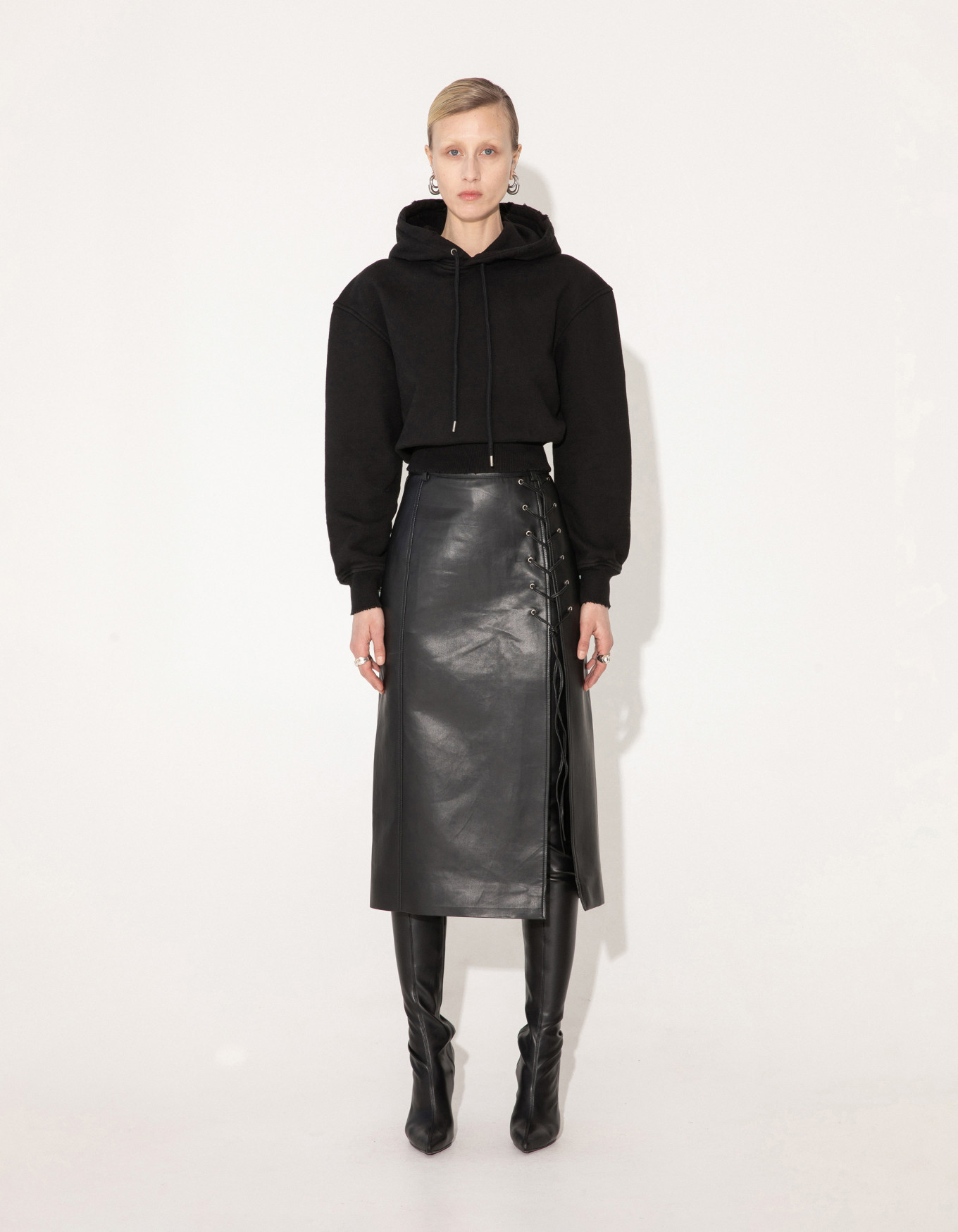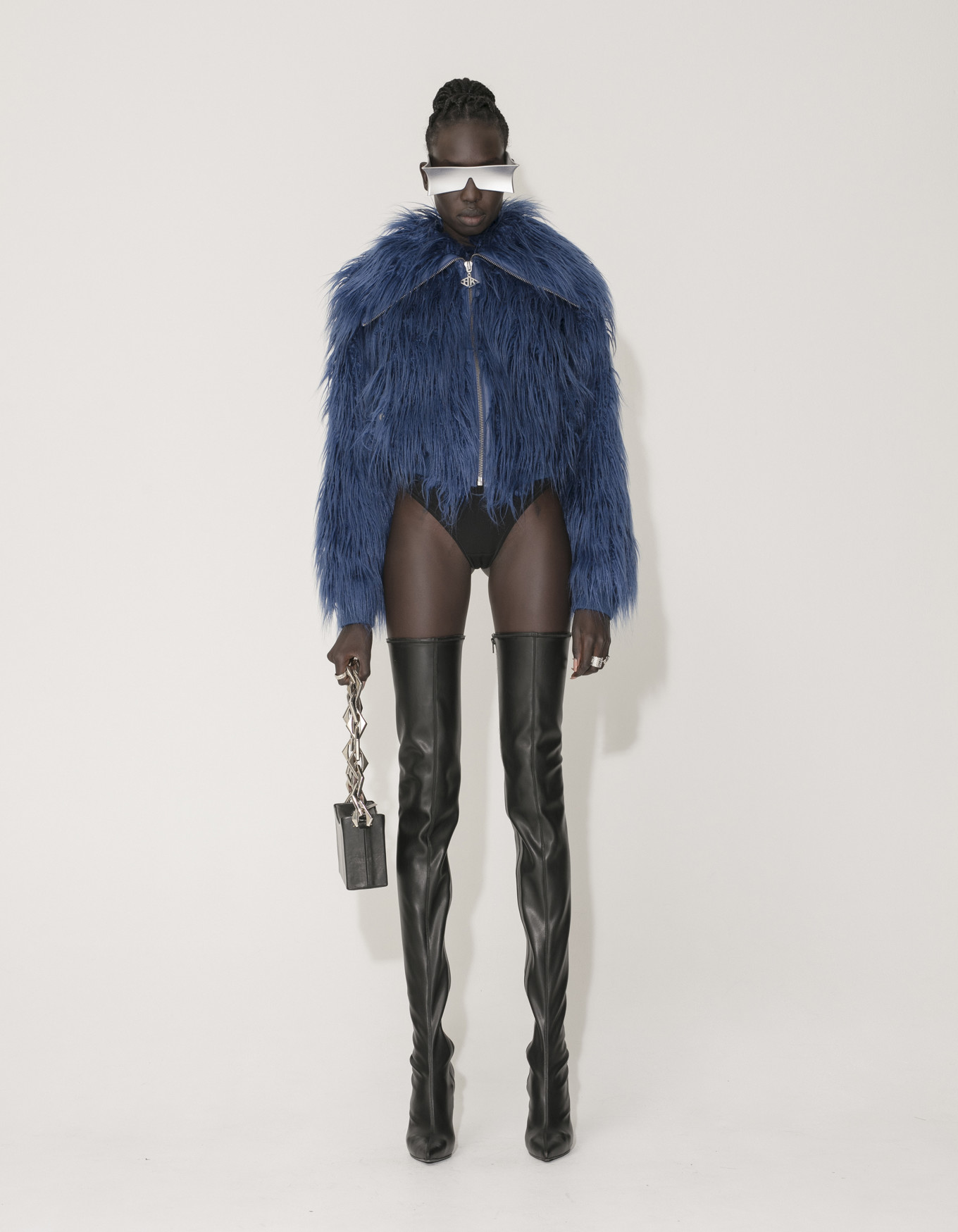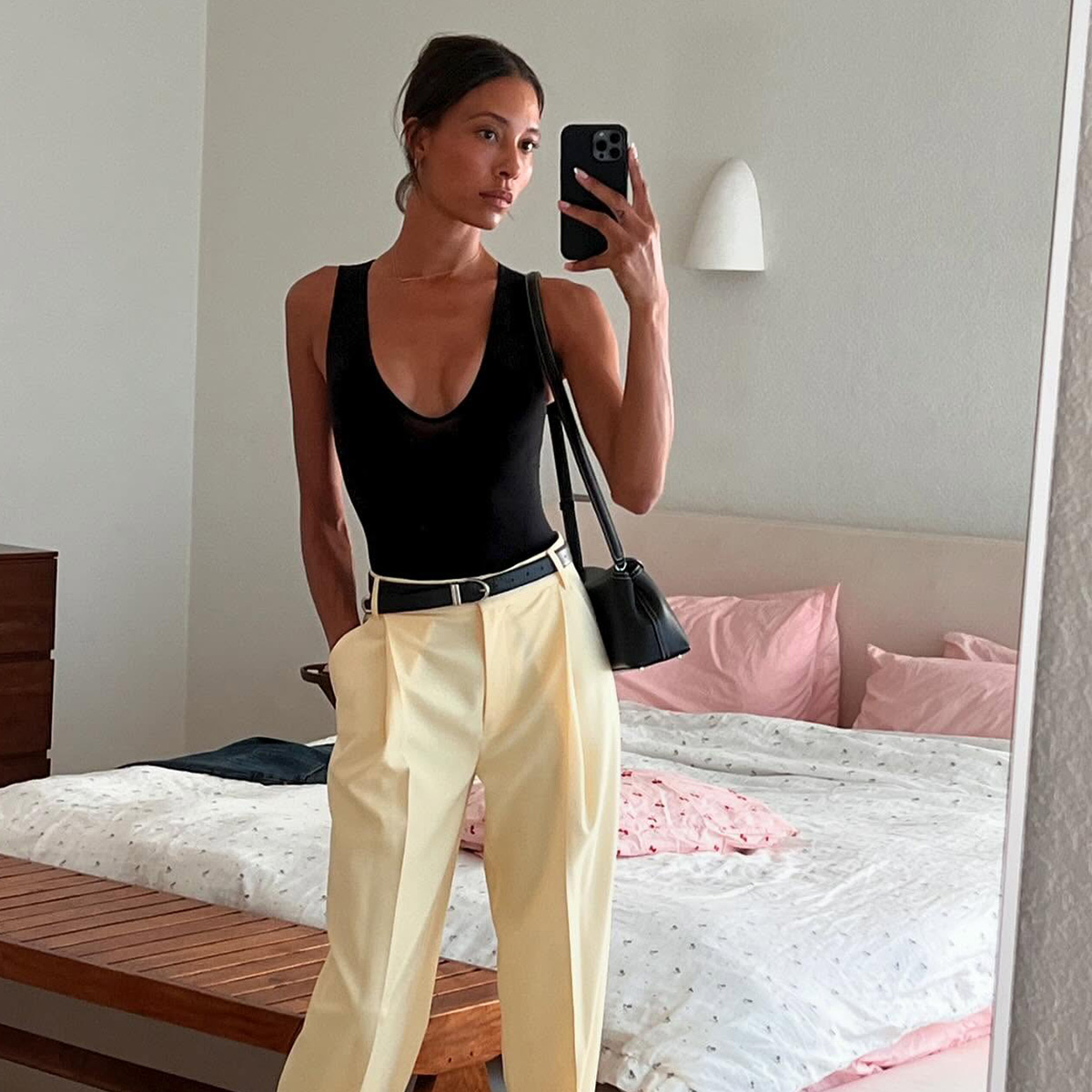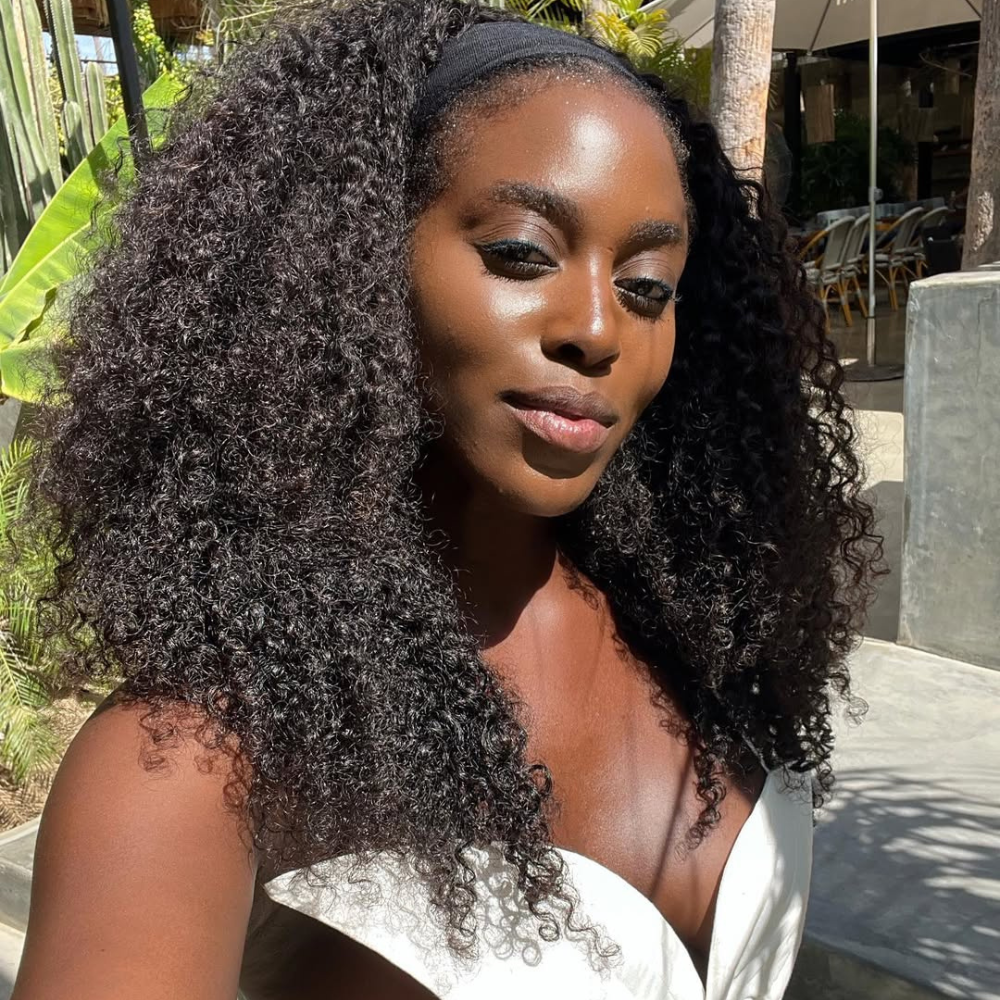How Copenhagen Has Cemented Itself as Fashion's Coolest City
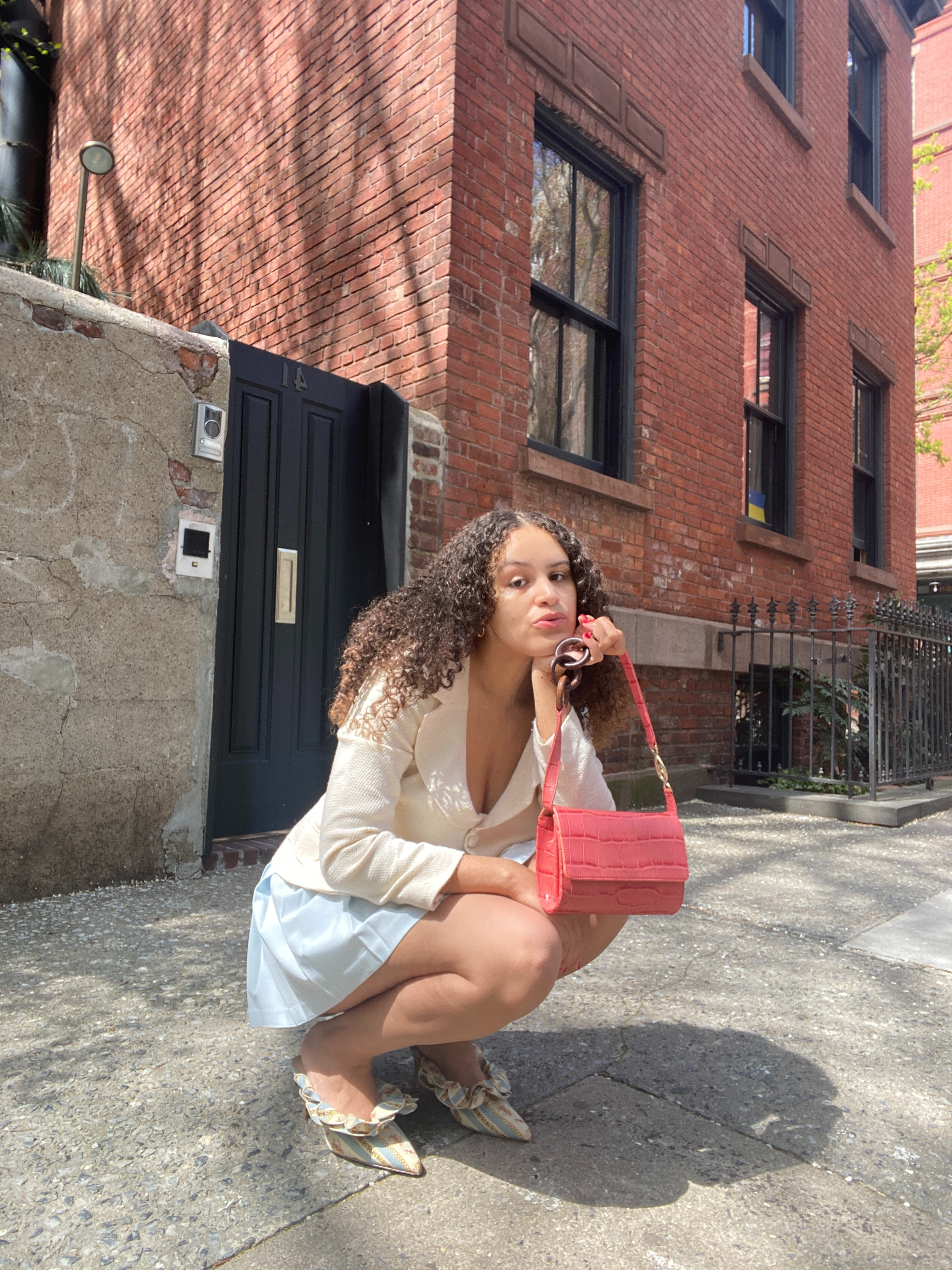
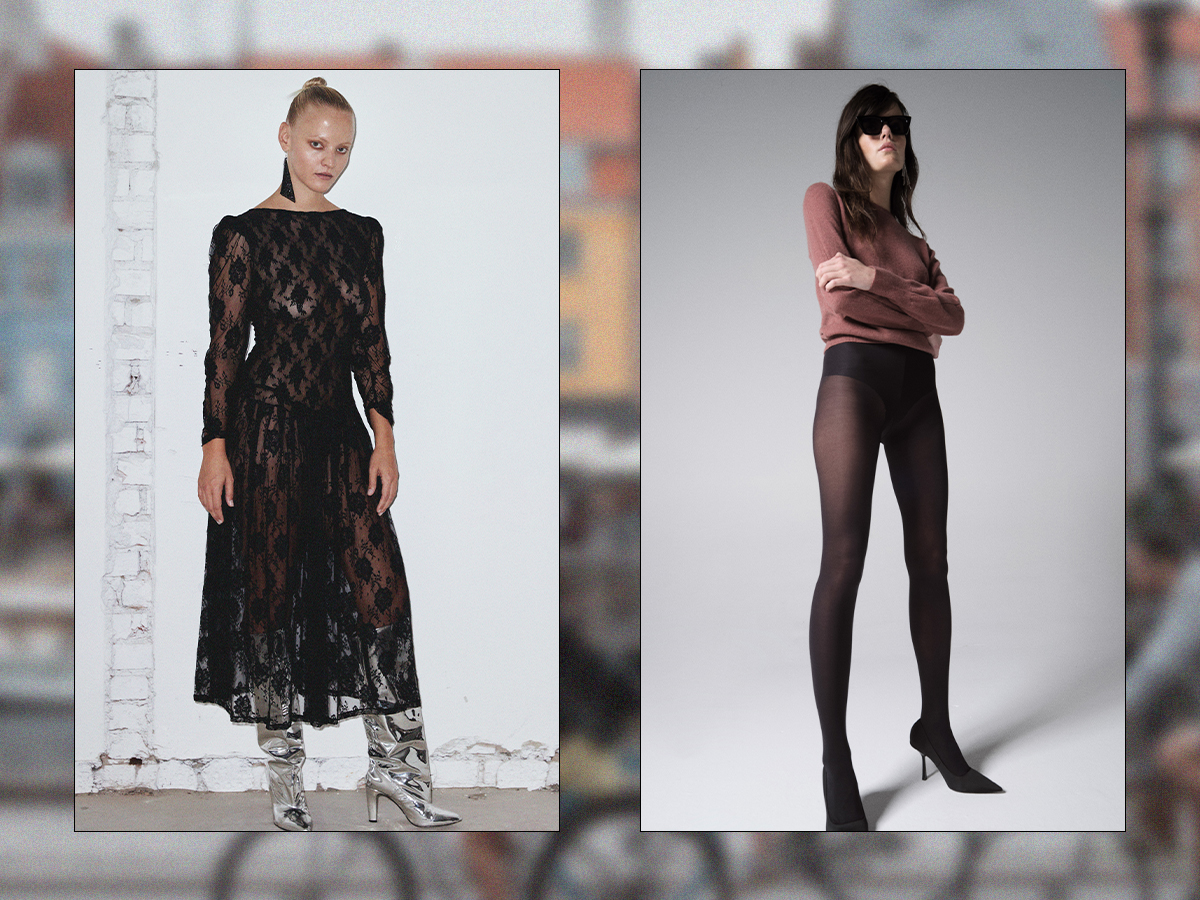
If you probe below the surface of any concrete or cobblestone city, you find something that makes it innately unique. For some global capitals, the defining feature is the cultural traditions, architectural gems, extensive history, and local cuisine. But for some, the creative communities put it on the map—or at least that's what I deduced after spending a week in the chilly and ultra-chic capital of Denmark, Copenhagen.
While this Danish country has all of the aforementioned things, the one thing that truly sets it apart is its fashion scene. Most may equate the idea of a "fashion capital" with some of the more apparent destinations (i.e., Paris and New York), but that's far from the truth. Many cities, including Copenhagen, have carved out their place in the industry. The city's budding fashion scene can be recognized for a few things, like the incredible crop of designers doing the work. But there's also another force at play here, and it's Copenhagen International Fashion Fair (or CIFF for short).
Now known as the largest biannual trade show in Europe, CIFF has become pivotal in cementing Copenhagen as a fashion hub. But that status wasn't attained overnight. The event has dealt with its challenges over the years—from scaling to navigating the COVID-19 pandemic to combating the misconceptions around trade fairs in general. Yet CIFF is doing better than ever. It just celebrated its 30th anniversary, has appointed a new director, and plans to make the event a cultural touchstone for the community. That aim to modernize the very notion of what a trade show can be is something I felt wholeheartedly when I attended the event in early February. How the organization is going about supporting brands surpasses the cookie-cutter model of trade shows of the past—it's doing something extraordinary.
And to showcase that, I've spoken with the newly appointed director of CIFF, Sofie Dolva, about how the organization has evolved and how it will continue to support Copenhagen's fashion scene. Plus, to highlight the talent that was a part of this year's fair, I spoke with six designers about the importance of trade shows and what makes Copenhagen the coolest fashion city. If this event, these designers, and this city weren't on your radar before, they will be now.
About CIFF
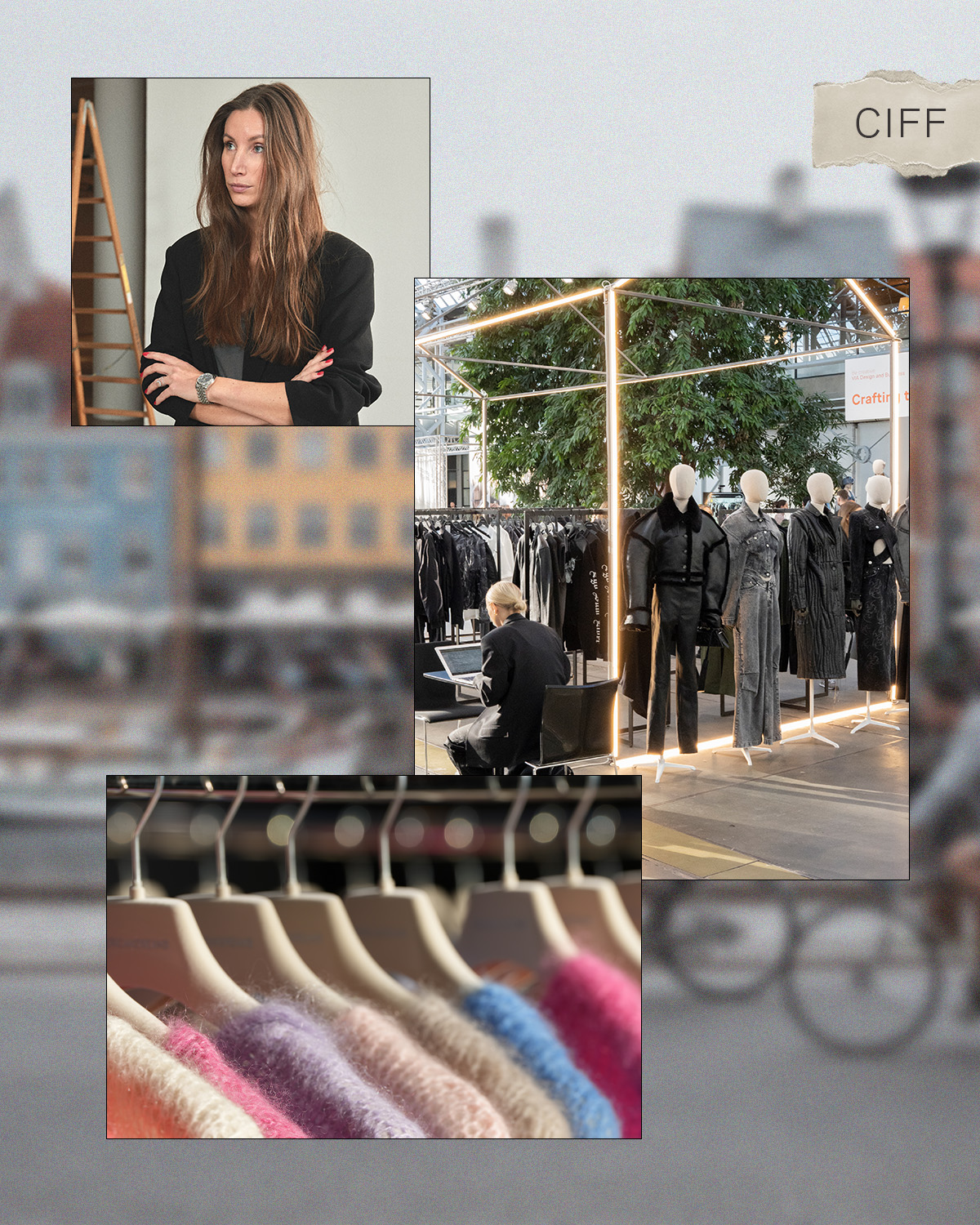
WHO: Sofie Dolva, director of CIFF
For those who are unfamiliar with your work, how long have you been in the fashion industry?
I've been in the fashion industry for seven months but have worked in parallel industries (beauty and fast-moving consumer goods) since 2010.
You were recently appointed the director of CIFF back in 2022. How did this role come about for you? And how are you hoping to further the legacy of one of Europe's largest trade shows?
I was personally approached by CIFF for the role, as they were looking for someone with experience from both a startup culture and corporate. I aim to be able to use my entrepreneurial background to develop the fair-trade concept further. Hence, we increase the return on investment for our brands and stay relevant for our buyers and visitors. We need to remain agile and evolve together with the needs of the industry.
How would you define a trade show for those unfamiliar with it? And what do you think are some of the most common misconceptions about fairs?
The core of a trade show is to showcase collections to buyers and media. We always try to focus our efforts on what's new and exciting for our guests, and we segment the brands so it makes sense so everyone can explore the brands that fit their target group. At CIFF, we try to inspire beyond the typical trade show set-up, allowing brands to use their space as creative installations and creating opportunities for networking through our talk schedule and daily social events, all of which provide our guests with food for thought around wider industry topics.
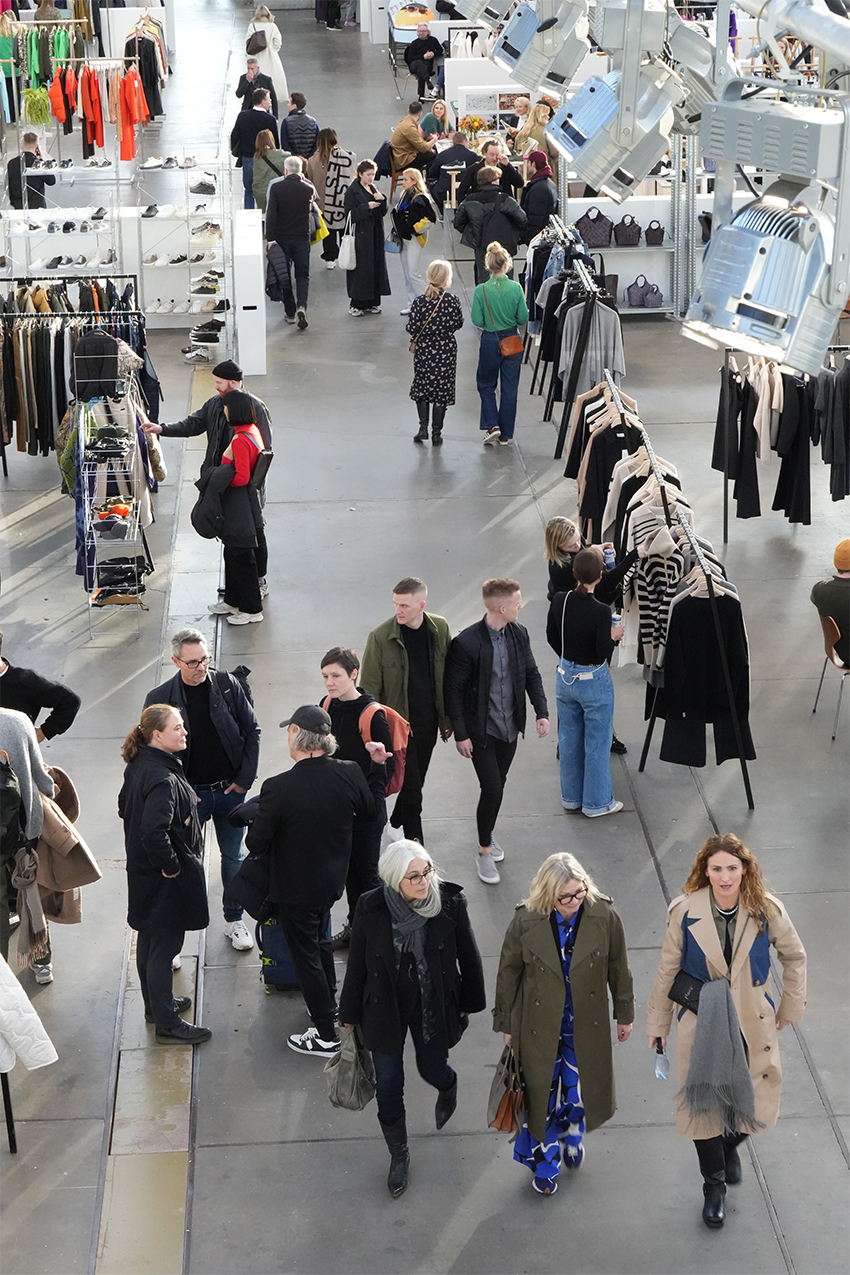
Just this past month, CIFF celebrated its 30th anniversary. Over that period, how do you think the event has changed the global fashion industry?
I don't think the event has necessarily changed the industry, but I do think the event is a good platform to get direct feedback and to understand how you need to adapt, change, and evolve to stay relevant.
In addition to impacting the global fashion industry, CIFF has become a crucial part of Copenhagen's smaller community. In what ways have you been able to help local talent in Denmark?
We try to support and sponsor local and emerging talent, as I feel it is part of our responsibility. One of the examples is our close collaboration with Alpha, where we host their annual fashion show and our newly opened showroom for new talents. The showroom is located with us year-round and is 100% sponsored by CIFF.
One thing differentiating Copenhagen from other fashion hubs is its continued dedication to sustainability. How has CIFF been a part of championing a more eco-friendly fashion industry? And how do you see the organization continuing to play a role in changing how we define and practice sustainability in the industry?
Within our close network, which spans the whole industry, we act as a springboard for members of our community to connect with each other and learn from one another across a range of matters, particularly on sustainability, something which is intrinsic to Scandinavian culture in general. Through talks and events, we try to act as an educational platform and give our community the toolbox they need in their journey toward being a more responsible brand. This way, we can help smaller brands that do not have enough resources or know-how but who really want to make sustainability an intrinsic part of the journey.
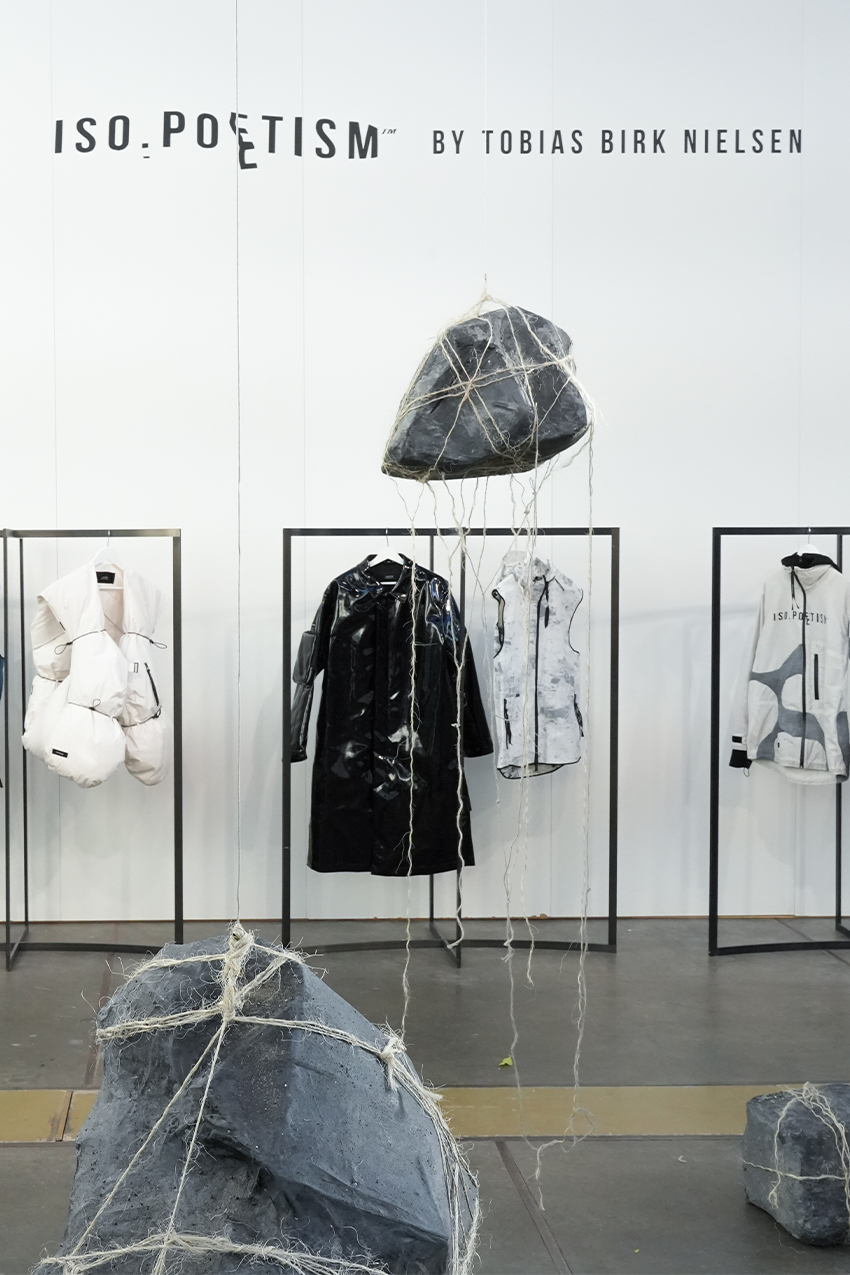
From working in this role thus far, what have you learned about the fashion industry as a whole that you hope to change through your leadership at CIFF?
I think one of the things I've noticed the most is how difficult it can be to become accepted by the industry without the right network. It is a closed industry with many emotions compared to many other industries. I would love to use our platform to showcase the diversity of fashion and embrace brands that have huge potential but are missing the network.
Since CIFF is about giving brands a platform to meet people in the industry, are there any standout brands from this year that you're personally obsessed with (e.g., any Danish brands or designers that are leading the way in sustainability)?
I am completely in love with Iso.Poetism by Tobias Birk Nielsen. I love how he makes circular fashion cool. I really like when people go all in, and one of my favorite universes at CIFF this season was Notes du Nord. They showcased their collection and universe in a unique way, housing their collection within a white-curtained cube that housed their own mini, elevated showroom. I really admire how they combine business savvy with modern Nordic design.
How do you feel CIFF has contributed to putting Copenhagen on the map in the fashion industry? And what do you hope this event will be able to achieve in the future?
As CIFF has been around for many years, we have created a huge international awareness that has helped push Scandinavian brands and make Copenhagen a destination for fashion and design. Right now, we have a huge momentum, and I'm sure we can accelerate even further as we move toward August and our acquisition of the Revolver trade fair comes into play.
Designers to Know
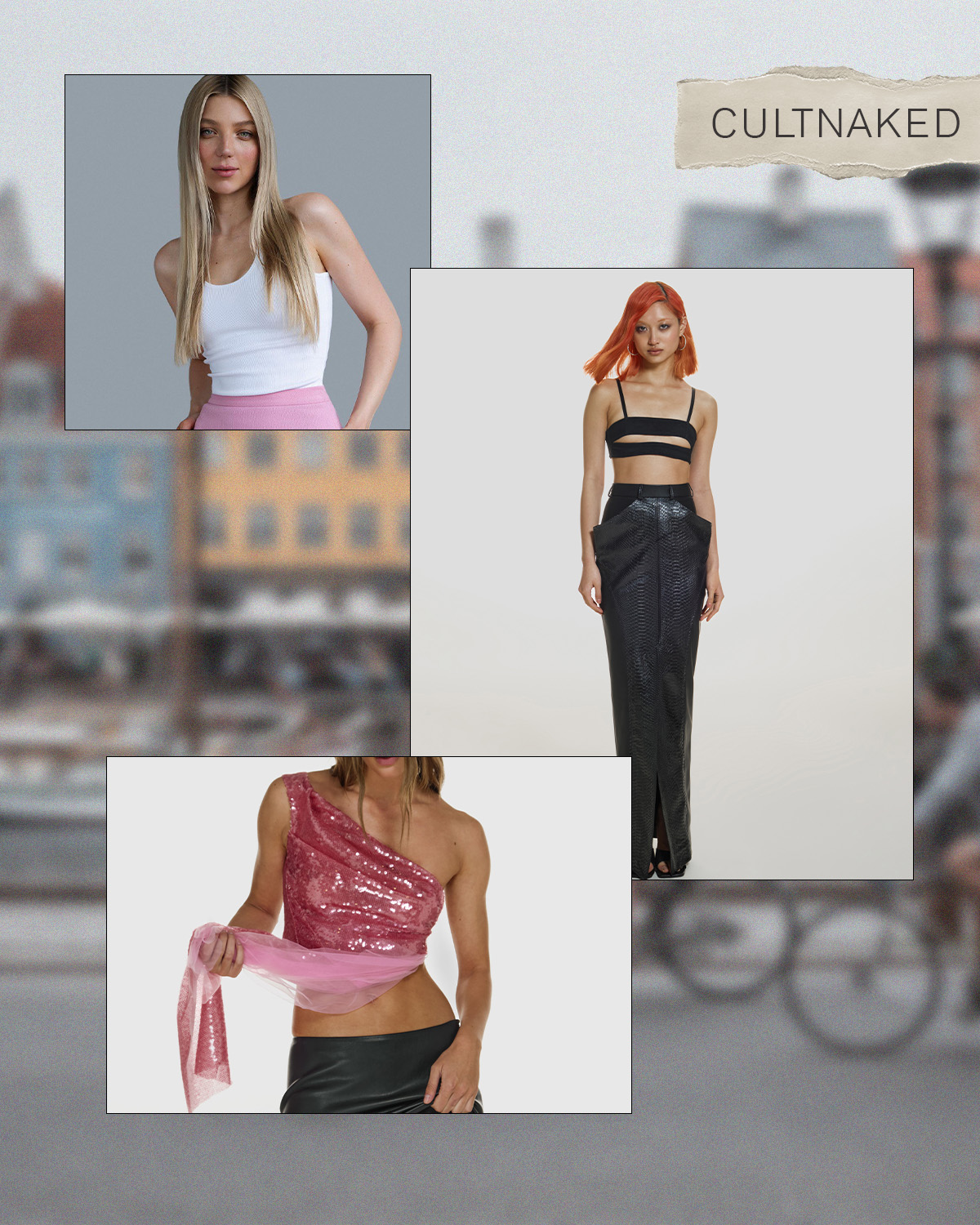
WHO: Mary Furtas, founder of CultNaked
For those who are unfamiliar with your work, how long have you been in the fashion industry?
I started doing fashion photography when I was still in high school—[it's] hard to believe, but this year marks 15 years of my career! I dropped out of university to pursue my dream and shot for Vogue and Harper's Bazaar when I was 21. And then I decided to pivot into fashion design and founded CultNaked in 2017.
What compelled you to start your label? How has the brand evolved since its founding?
My obsession with comfortable partywear made me do it! I kept reconstructing my closet to make it more fitting, unique, and cozy to dance. Once I realized people were very much into my outfits and constantly asked where I'd get them from, the work started in that direction. The brand grows with me, which is natural and the most exciting part of doing the business. We are obsessed with the fits and the real-life street style factor of it—not losing the sexy, which is sewn into the DNA.
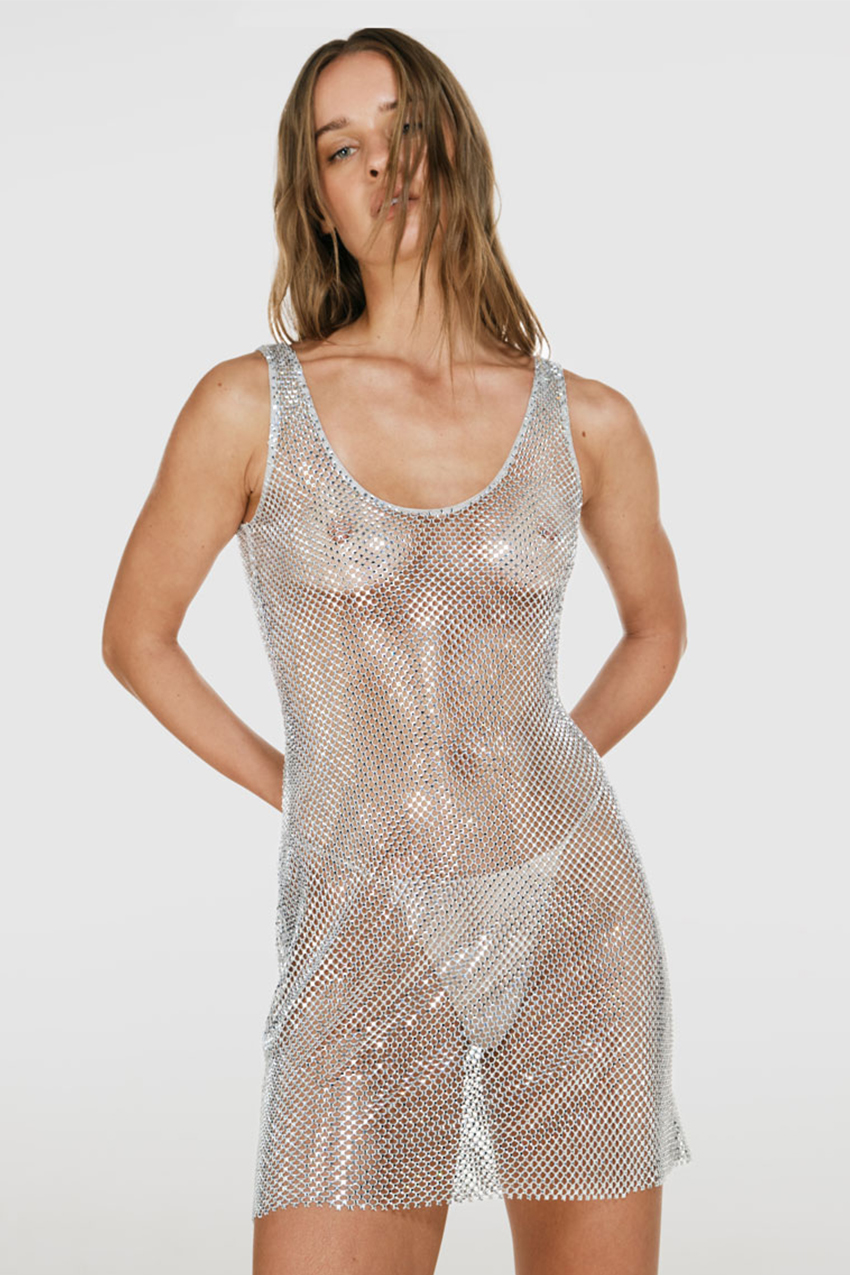
You just were at CIFF in Copenhagen showing your fall/winter 2023 collection. As a designer, why was it imperative you be a part of a trade show? And what's one thing you wish more people knew about the process of being a part of a trade show as a designer?
Our brand has mostly built its following online for five years by knowing exactly what our client wants and perfecting our skills. And I felt like we were ready to take on B2B and be a good partner to stores we admire, so we decided to be a part of CIFF. Being there felt amazing; it's inspiring how Copenhagen shares our vision to create a more sustainable future for the industry. My team felt very welcomed, and it's important to have that when you're a newcomer to the industry.
Typically when we think about fashion capitals, people think of cities like Paris, NYC, and London. Why did you choose to show your work in Copenhagen over other fashion capitals? And how do you feel Copenhagen's creative scene is changing the fashion industry as a whole?
We took a chance to show in Copenhagen because it feels young—just like us! Many cool people come to this city to see the dazzling street style and enjoy creativity from the community, and for us, it felt like a great match. We're also shoring in Paris and Milan with our partners this year, but the approach to sustainability and style in Copenhagen can't be beaten.
Besides all the budding talent, one thing that makes Copenhagen unique is its continued dedication to championing sustainability. As a designer, how do you define sustainable fashion? And how do you apply it to your own work?
Being transparent, no brand is 100% sustainable. If it was, it wouldn't exist. But our main aim is to challenge the fast-fashion model and create pieces that champion quality materials and fair pay for workers. I don't want my clothing to end up in a landfill. That's why we're doing our best to create long-lasting pieces. And the way we're doing that is by prioritizing making less stock. We have our own production in Lviv, Ukraine, and being a digitally native business, we do a lot of made-on-demand after the client already places the order. The speed would typically be the same: Dispatch time is within two days. Of course, we use the best, most up-to-date recycled fabrics, organic cotton and viscose, deadstock, and everything that's possible to make it less harmful.
Speaking of your work, please tell us a little bit about your recent collection. Where did you draw inspiration from? Are there any standout looks or trends you hope we'll take away from this collection?
I don't often think of myself as a designer, more like a creative director to make things make better. My inspiration comes from what I want to wear. It's that simple. I'm currently obsessed with the maxi-skirt trend we've seen everywhere along with the crystal-netted pieces we've seen everywhere. With summer coming soon, those are the perfect pieces to shine in.
Lastly, what do you hope your legacy will be as a designer? How do you hope your work will contribute to cementing Copenhagen as a fashion capital?
We're definitely going to be showing again at CIFF next season because the vibes are incomparable. To me, it's already a fashion capital. I am very grateful for the support of Ukrainian designers at CIFF when we need it most, and I hope we can pay back by bringing more value and energy.
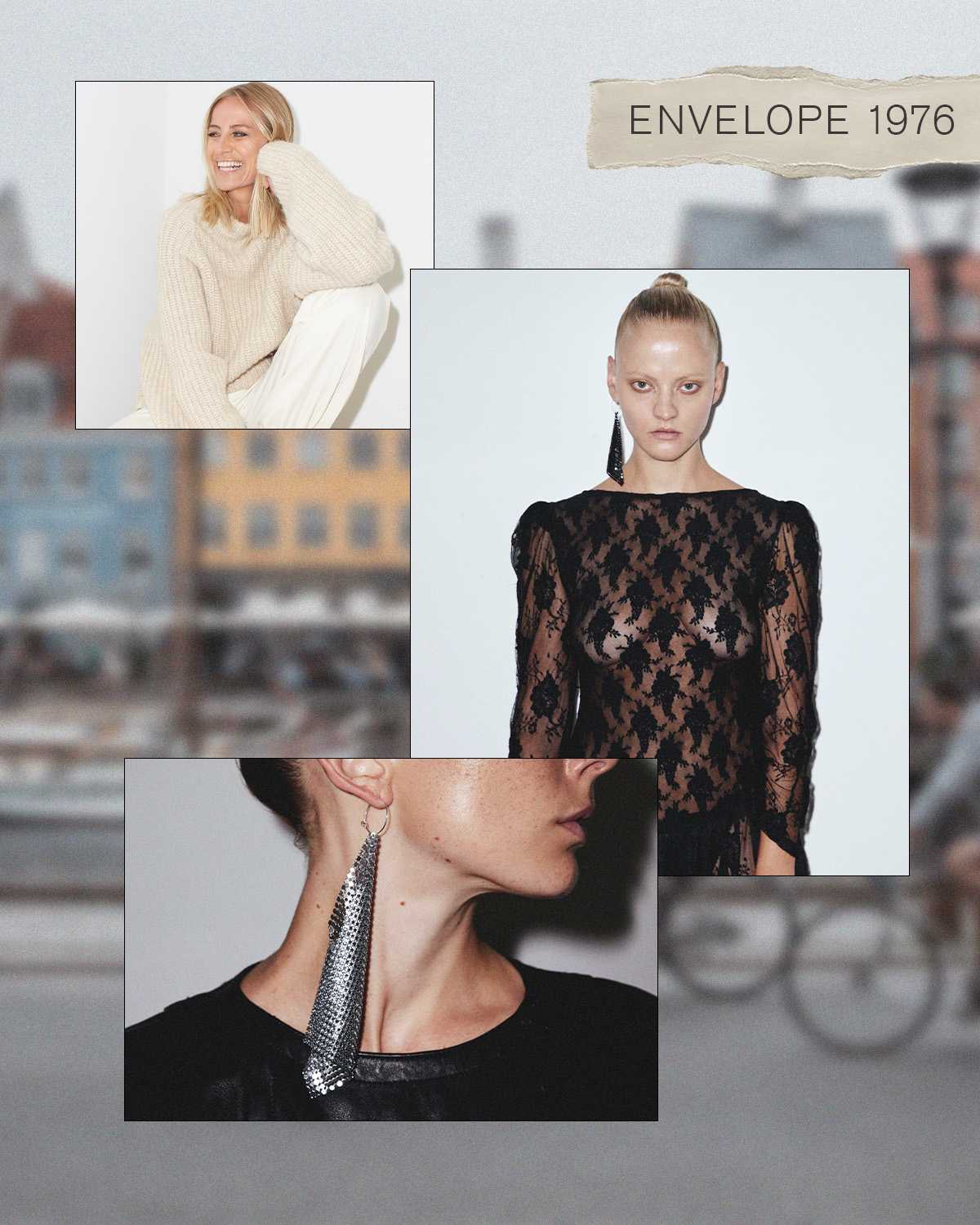
WHO: Celine Aagaard, founder, co-owner, and creative director of Envelope1976
For those who are unfamiliar with your work, how long have you been in the fashion industry?
I have been in the business for about 25 years, starting in the realm of journalism, photography, and styling as the editor in chief of different magazines in Norway. After that, I did a few small, successful design projects before starting my own label. I decided to launch Envelope1976 in October 2018.
What compelled you to start your label? How has the brand evolved since its founding?
When we launched, there was a gap in the market because the overall focus was based on trends and not seasons. We wanted to create a more seasonless brand with a focus on minimalism. We wanted to grow organically and have been selective with what doors we wanted to open regarding production. Still, internationally, we are at Net-a-Porter and a few smaller concept stores in Copenhagen, France, Spain, and Germany. Since the launch, we have opened our own concept store in Oslo and Barcode. And in August 2022, we had our first runway show during Oslo Runway, with a new one coming this fall.

You just were at CIFF in Copenhagen showing your fall/winter 2023 collection. As a designer, why was it imperative you be a part of a trade show? And what's one thing you wish more people knew about the process of being a part of a trade show as a designer?
I think we all were a bit more skeptical about showing at trade shows a few years ago, but when we were asked, we decided that it was worth a try. For me, as the creative director and founder, it's important to take part in all aspects of the business, and the sales part is something I have been involved in since the very beginning. You learn a lot, reach out to new people, and get feedback that could be very needed in the process.
Typically when we think about fashion capitals, people think of cities like Paris, NYC, and London. Why did you choose to show your work in Copenhagen over other fashion capitals? And how do you feel Copenhagen's creative scene is changing the fashion industry?
Copenhagen has always been close to my heart when it comes to fashion. As a Scandinavian born and raised in Oslo, I have to admit that I have always been inspired by the effortlessly cool Danish people. I also think Denmark has taken an important position in the business by focusing on sustainability. For us, the fact that sustainability is their top focus was one of the reasons why we chose to show in Copenhagen at the fair. We still do our show in Oslo and do have showrooms in Paris, but I think the sustainable agenda and the opportunity to meet new stores, buyers, and clients are what drew us to the city.
Besides all the budding talent, one thing that makes Copenhagen unique is its continued dedication to championing sustainability. As a designer, how do you define sustainable fashion? And how do you apply it to your own work?
Our focus is to create seasonless collections with an edge, focusing on sustainability both in the design and in the fabrics we use. Longevity is the key to sustainability—you should be able to wear items for years. And the main problem in the industry and with consumers is that we have forgotten that.
Regarding your work, please tell us a little about your recent collection. Where did you draw inspiration from? Are there any standout looks or trends you hope we'll take away from this collection?
For spring, the collection is inspired by my road trips in the past. (I even did hitchhike back then if you can believe it.) Imagine being in the middle of nowhere with dusty roads all around, insane heat, and no clue what village to be the next to visit—that was the inspiration. For us, we reflected through an oversize blazer and a pair of washed stone-gray denim. We had edgy biker details, fringe details, and also shearling. It was a fall collection drop with spice and edge, and it's not even done yet. There's more to come.
Lastly, what do you hope your legacy will be as a designer? How do you hope your work will contribute to cementing Copenhagen as a fashion capital?
We're a Norwegian fashion brand focusing on sustainability, and in many ways, that's aligned with Copenhagen's approach to fashion at large. It's not sustainable at all to produce any new clothes, but we hope we can inspire people to make some better choices, and that's how we can make changes in the business for a better future.
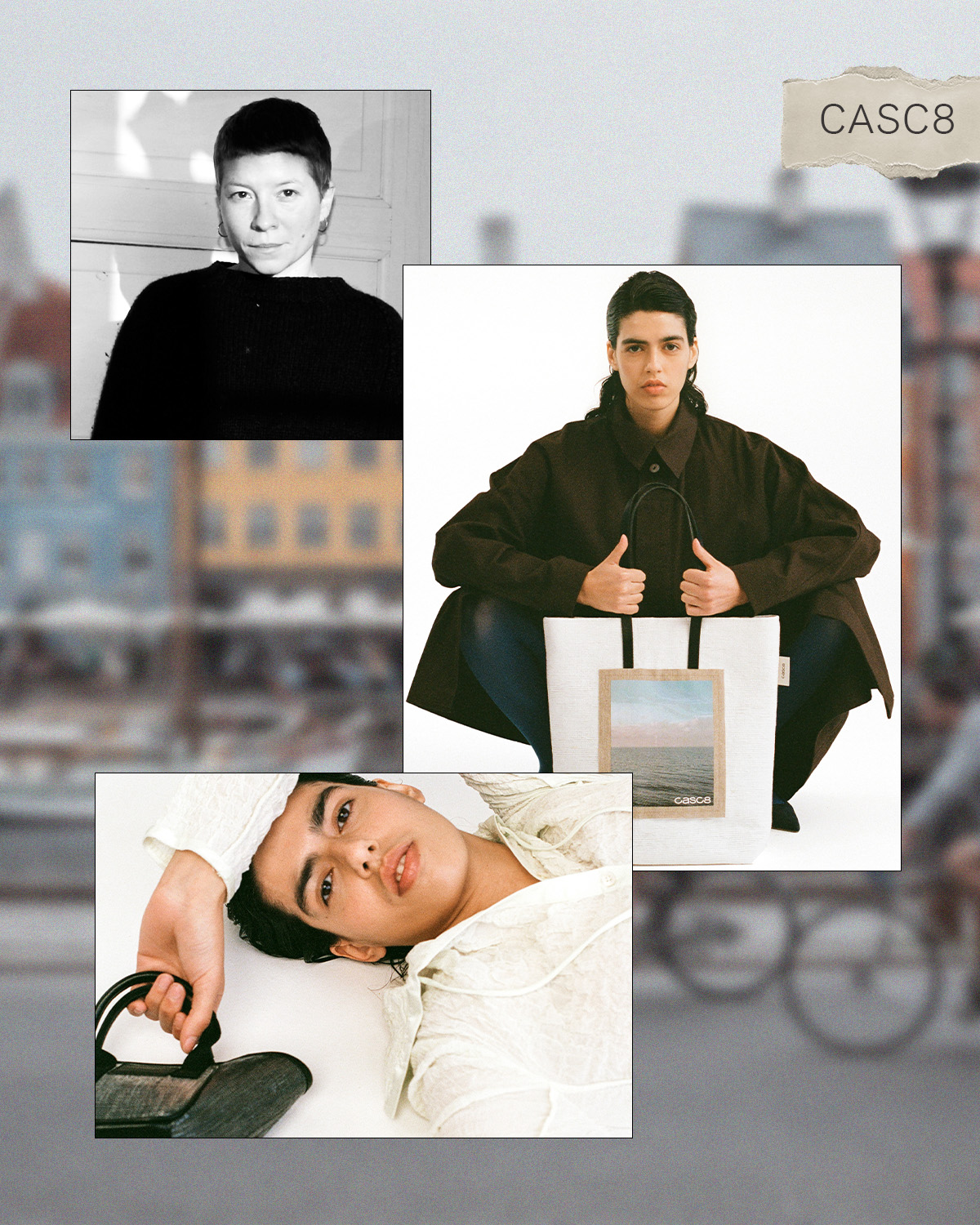
WHO: Sara Emilie Terp, founder and artistic director of Casc8
For those who are unfamiliar with your work, how long have you been in the fashion industry?
I graduated from Central Saint Martins MA womenswear in 2015 and worked at Celine before starting Casc8 in 2018.
What compelled you to start your label? How has the brand evolved since its founding?
I wanted to create something that reflected my beliefs and ideas, offering an alternative perspective to the status quo of the fashion world. Casc8 has grown organically, establishing new partnerships, collaborating with other creatives, and being represented in select retail spaces worldwide.
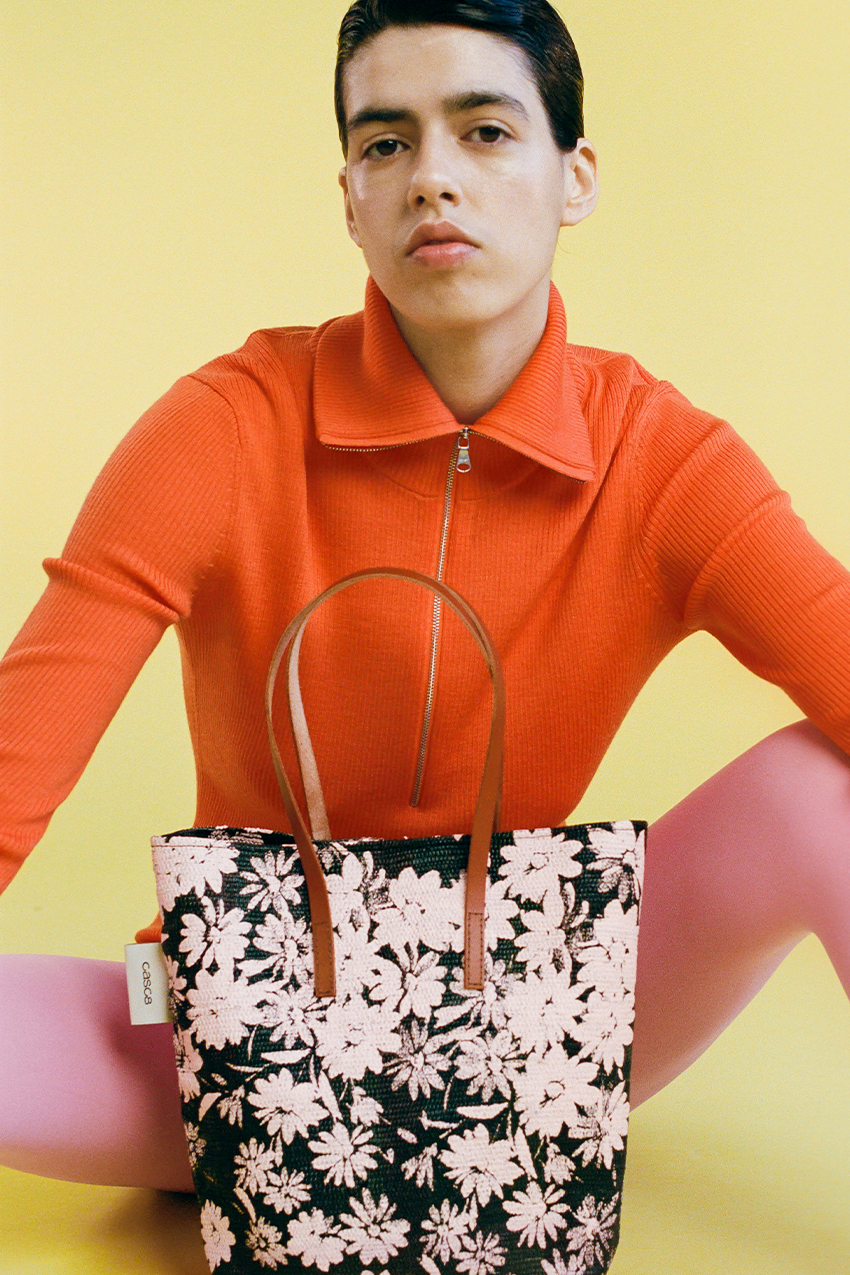
You just were at CIFF in Copenhagen showing your fall/winter 2023 collection. As a designer, why was it imperative you be a part of a trade show? And what's one thing you wish more people knew about the process of being a part of a trade show as a designer?
A trade show can be where you meet people across the industry, not just buyers but also manufacturers, investors, journalists, and other creatives from the industry. It's altogether a great place to network and learn about the industry.
Typically when we think about fashion capitals, people think of cities like Paris, NYC, and London. Why did you choose to show your work in Copenhagen over other fashion capitals? And how do you feel Copenhagen's creative scene is changing the fashion industry?
I am from Copenhagen originally, so it felt quite natural to present a collection here this season. Copenhagen is a great front-runner when it comes to working toward a more sustainable agenda, and I think it's something other fashion capitals will adopt in the near future.
Besides all the budding talent, one thing that makes Copenhagen unique is its continued dedication to championing sustainability. As a designer, how do you define sustainable fashion? And how do you apply it to your own work?
I've always thought it was fairly difficult to call a product fully sustainable, as we are ultimately adding more products into a world that already has more than we need. But sustainability can be when you consider the full life cycle of a product, the materials you are using, and the way it is made. I want to aspire to design products that are circular, timeless, and long-lasting and value the quality aspects of production. In my work, I try to focus on using existing materials—more specifically, turning the abundant plastic waste we are currently struggling with into something useful. Currently, I collaborate with an NGO organization in India, which is weaving upcycled plastic into beautiful textiles. It is a project that supports the art of craftsmanship and values the importance of artisan communities while also communicating a positive message about the possibilities of recycling materials.
Regarding your work, please tell us a little about your recent collection. Where did you draw inspiration from? Are there any standout looks or trends you hope we'll take away from this collection?
The autumn/winter 2023 collection is called Sol Wanderer and is a metaphor for the wearer of the Casc8 bags. Sol means sun in Danish but can also sound like the English adjective sole—hence she is an independent, sometimes solitary nature lover and worshipper. Nature is always at the heart of my inspiration. For this collection, I collaborated with print designer Fiona Blakeman, who hand-screen-printed a delicate flower print in hues of rosa, lemon, and charcoal onto the woven upcycled plastic textiles. Casc8 also presented bags featuring a photographic print series of favorite peaceful nature spots, such as a pale-blue infinite horizon of a Danish sea view and a lake in Vienna where the sky is mirroring its reflection.
Lastly, what do you hope your legacy will be as a designer? How do you hope your work will contribute to cementing Copenhagen as a fashion capital?
It would be great to be associated as a designer with the movement of championing sustainability within the fashion field. I hope my work will add an alternative contribution to all the existing brands out there.
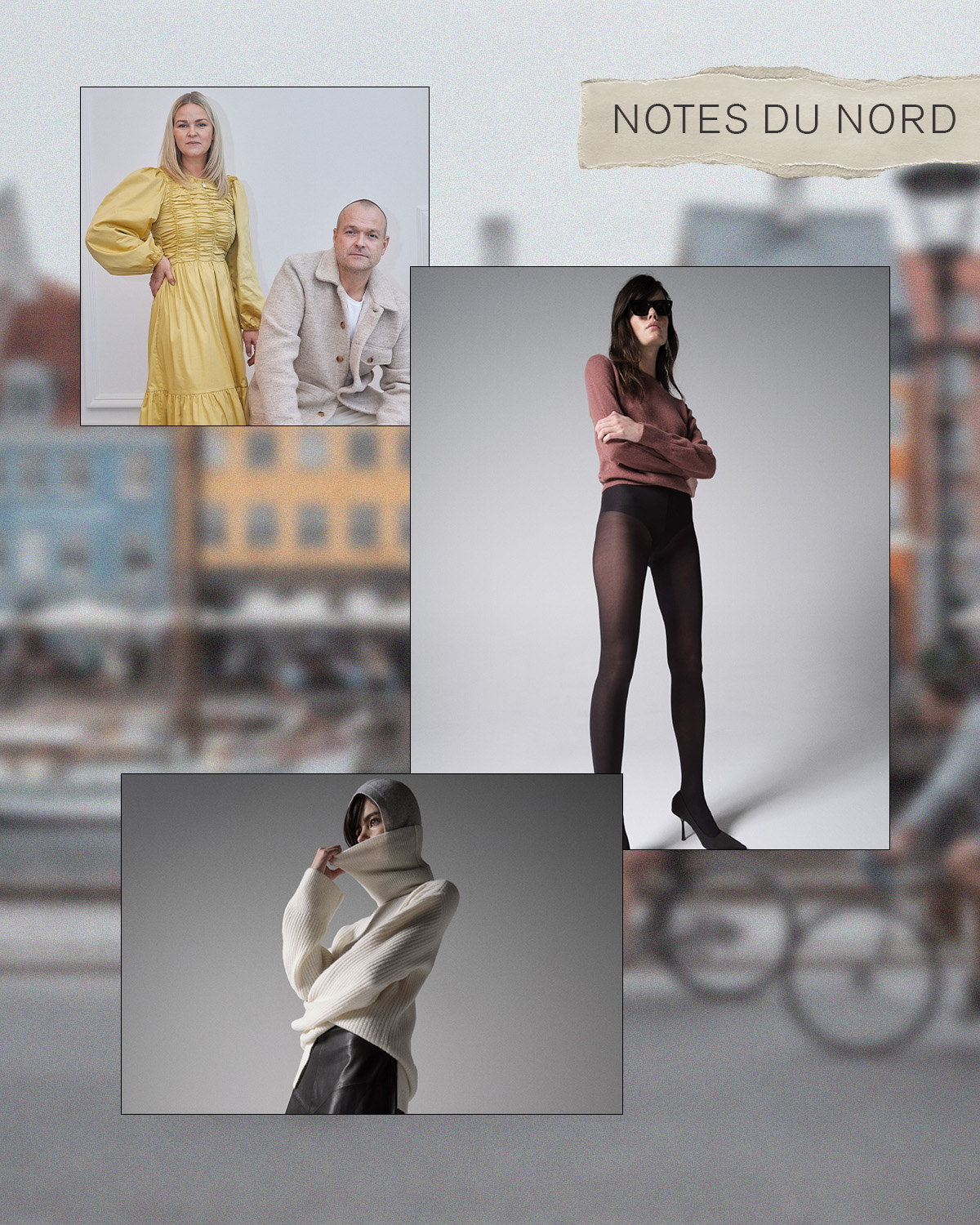
WHO: Sara Sode, creative director and co-founder of Notes du Nord
For those who are unfamiliar with your work, how long have you been in the fashion industry?
My love for fashion began when I, as a kid, read my mom's fashion magazines. I have also danced professionally for many years, where outfits made a huge difference. I used to sit with my mom and dad. We designed and sewed my dance costumes for years. As an adult, I got a fashion-industry job and knew right away that this was what I wanted to do. We officially launched our brand on June 6, 2016, with the first delivery in January 2017.
What compelled you to start your label? How has the brand evolved since its founding?
We saw something was missing in the market and wanted to create a high-end brand with affordable prices. We had serious growth from 2017 to 2020 before COVID-19 hit. Then we had to rethink the entire business and find our feet again. In the process, I feel that we have refined our identity as a brand with a very clear design DNA, and we have made a strong strategic growth plan for the next three to five years, so I'm very excited about the future.
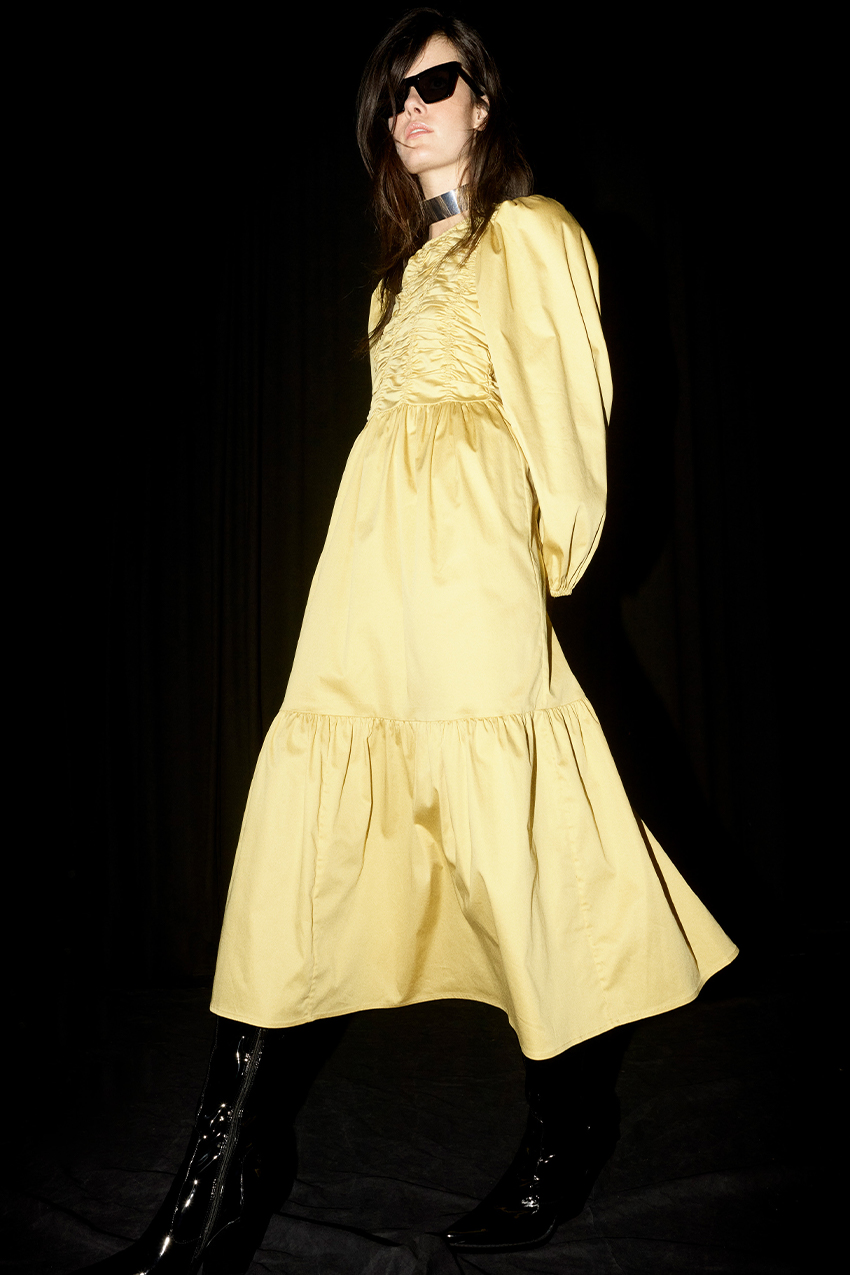
You just were at CIFF in Copenhagen showing your fall/winter 2023 collection. As a designer, why was it imperative you be a part of a trade show? And what's one thing you wish more people knew about the process of being a part of a trade show as a designer?
Especially after grappling with a global pandemic, we as a brand must support CIFF as a leading trade show in one of the world's fashion capitals. The CIFF team has made a tremendous effort to transform it from a local trade show into a global fashion event. And I wish more people knew all the steps to create clothing. There's the initial design process, where you sketch ideas and make patterns; then, you develop a print or fabric. Then you have to create samples and go through the fitting process to take those pieces and shoot them for a lookbook. And then you're showing the pieces at a trade show so buyers can bring the brand into their stores. If people knew more about the production process, they would appreciate fashion on another level.
Typically when we think about fashion capitals, people think of cities like Paris, NYC, and London. Why did you choose to show your work in Copenhagen over other fashion capitals? And how do you feel Copenhagen's creative scene is changing the fashion industry?
Well, we're Copenhagen based, so it's a natural choice for us. But honestly, I view the Copenhagen creative scene as equally crucial as Paris, NYC, and Milan—not only for fashion but for interior design and even beauty. We all grow up knowing that we live in a small country in Denmark, so we must go global to create a financially successful business. I feel that Copenhagen's creative scene is driving change regarding inclusivity and sustainability. In 2022, Denmark could provide 59% of its energy consumption from wind and solar energy. And the Copenhagen fashion industry is following suit and leading the way.
Besides all the budding talent, one thing that makes Copenhagen unique is its continued dedication to championing sustainability. As a designer, how do you define sustainable fashion? And how do you apply it to your own work?
We've focused on getting sustainability certificates on the fabrics before we call them sustainable. We are setting the bar high and keeping to the true meaning of the word. If we break down our collection and look at the number of styles containing sustainable elements and fabrics, we're far ahead of other brands.
Regarding your work, please tell us a little about your recent collection. Where did you draw inspiration from? Are there any standout looks or trends you hope we'll take away from this collection?
My recent collection has been dubbed Ode to the Moon. I typically find my inspiration in nature or the elements. For me, it's always about contrasts. The inspiration for fall/winter 2023 is drawn from the moon. It's a powerful symbol of femininity, intuition, and creation, and just like the moon sheds light and enhances the beauty that is already there, I want this collection to do the same for you—to enhance the beauty that you already possess.
Lastly, what do you hope your legacy will be as a designer? How do you hope your work will contribute to cementing Copenhagen as a fashion capital?
At the very core of my soul and our design DNA, I aspire to empower women and encourage them to stand tall, feel sexy, and look exquisite. I want us all to feel comfortable and stylish in our skin! I want to make it easy to dress up confidently and ensure that the transition from sophisticated socialite to driven career woman, from loving mom to femme fatale, feels effortless and looks elegant. I don't want women to fit my brand. I want my brand to equip women for whatever occasion.
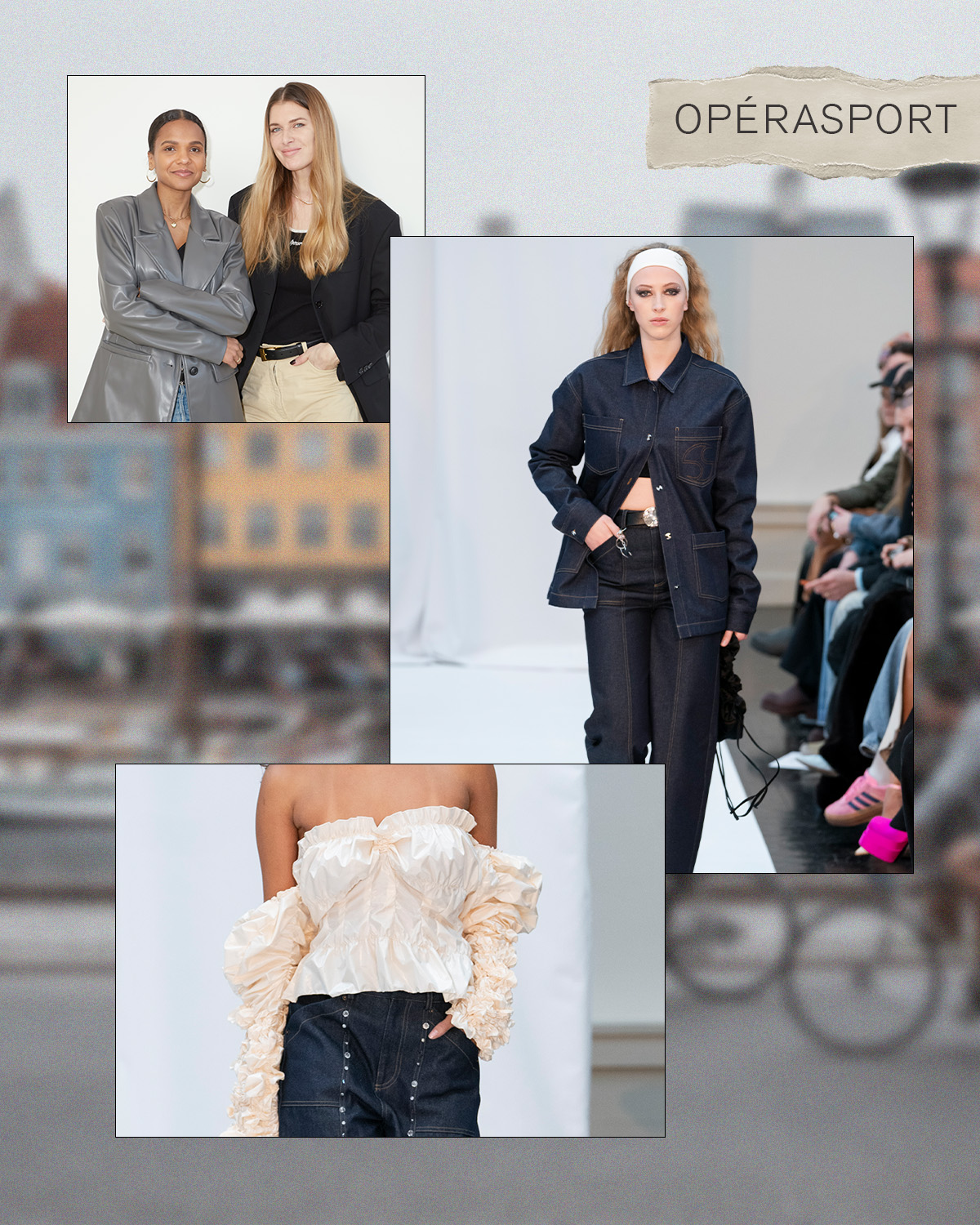
WHO: Awa Malina Stelter and Stephanie Gundelach, co-founders of OpéraSport
For those who are unfamiliar with your work, how long have you been in the fashion industry?
Awa Malina Stelter: I've been in the fashion industry for 11 years and worked in production and design.
Stephanie Gundelach: I've been in the fashion industry for over 15 years and have a background as a freelance consultant and stylist.
What compelled you to start your label? How has the brand evolved since its founding?
AMS: We started OpéraSport in 2019 with the desire to show an alternative to the traditional business models that the majority of the industry operates with today. We want to show that sustainable clothing can be sexy. When we started in 2019, we were based in separate cities, Copenhagen and Paris, and were attracted by the similarities and contrasts between the two cities. It is something that lies deep in OpéraSport's DNA—the love for classy Paris and sporty Copenhagen. From that, we created a brand emphasizing elegance, usability, and responsibility.
SG: And to add onto that, a responsible way of thinking reflects production, where we only use recycled and organic materials and where the demand reflects how much is produced. OpéraSport started with a vision of only being a B2C brand, selling directly to our consumers through our own channels. We quickly got a lot of attention and saw a rising demand from retailers who wanted to have OpéraSport as a part of their brand portfolio. Now, we are both a B2C and B2B brand.
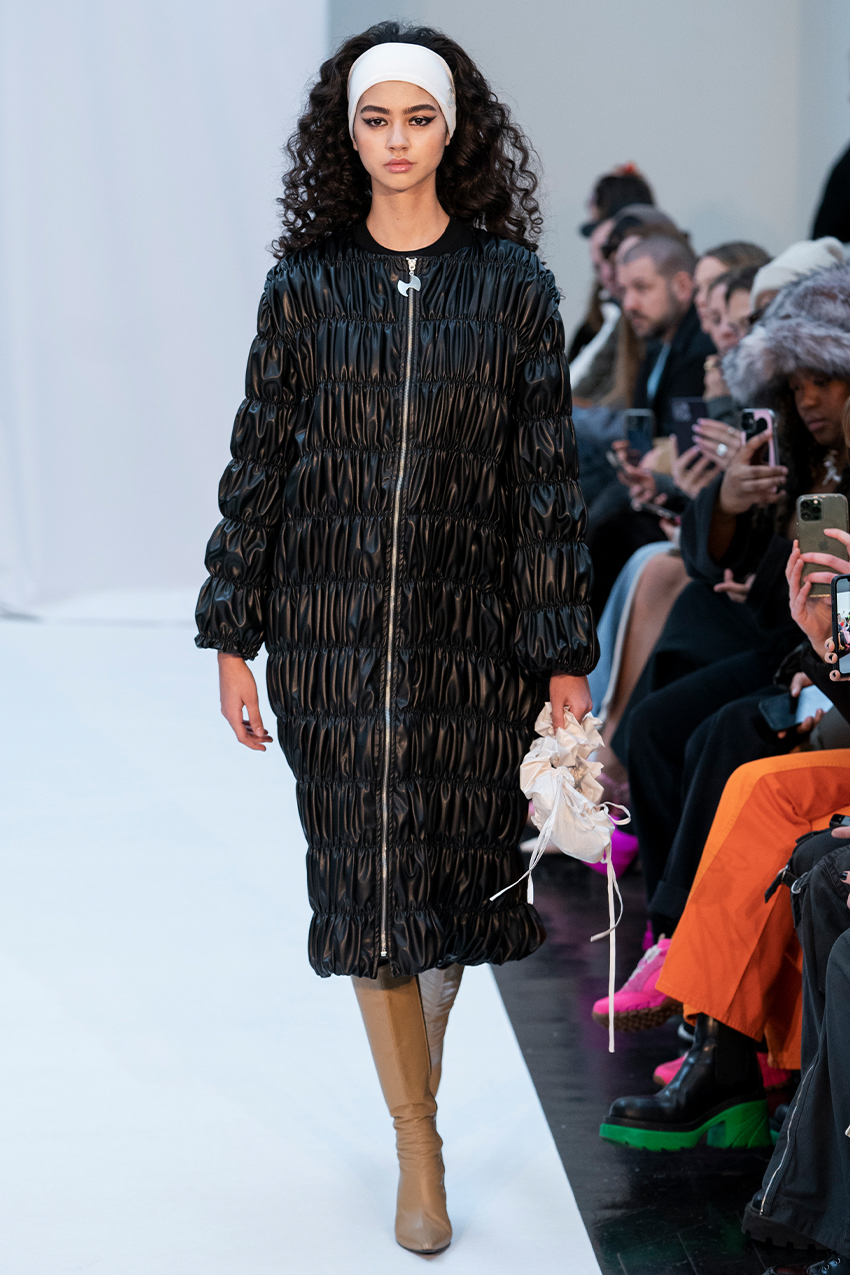
You just were at CIFF in Copenhagen showing your fall/winter 2023 collection. As a designer, why was it imperative you be a part of a trade show? And what's one thing you wish more people knew about the process of being a part of a trade show as a designer?
SG: It was our first time being a part of a trade show. We have always felt like our needs were covered through our own showroom, but when CIFF reached out this fashion week, we had a great dialogue, and we were interested in exploring the possibilities a trade show could give. We do not have much experience in being a part of trade shows and being a small independent brand. There was a lot of preparation involved. But it was a great experience because we were meeting a lot of potential retailers and getting to know a lot of like-minded brands that we could exchange experiences with.
Typically when we think about fashion capitals, people think of cities like Paris, NYC, and London. Why did you choose to show your work in Copenhagen over other fashion capitals? And how do you feel Copenhagen's creative scene is changing the fashion industry?
AMS: From 2019 to 2022, we were based in respectively Paris and Copenhagen, but last summer, Stephanie moved from Paris to Copenhagen, where we are now based with an office with five employees and four interns. We were born and raised close to Copenhagen, so it felt natural to have our show here. However, we dream of being able to have a show abroad one day. Regarding how Copenhagen's creative scene is changing the fashion industry, CPH Fashion Week has certain sustainability requirements that introduce a minimum set of standards that all CPHFW show schedule brands must conform to by 2023.
Besides all the budding talent, one thing that makes Copenhagen unique is its continued dedication to championing sustainability. As a designer, how do you define sustainable fashion? And how do you apply it to your own work?
SG: Sustainable fashion is responsible fashion. It focuses on quality instead of quantity. The intention remains to ensure relevance and timelessness throughout. At OpéraSport, we try to minimize our footprint on global CO2 emissions by producing responsibly. Since the first collection, all fabrics besides cotton have been created from industrial waste. This includes silk, wool, polyester, and cotton. If our cotton is not also recycled, it is organic and GOTS certified. And all our collections are made-to-order, meaning we only produce the quantities our customers have ordered and what we believe our webshop can generate. Therefore, no excess stock will be produced to minimize overproduction. Right now, we operate with four collections a year—spring, summer, fall, and winter. By doing this, we can deliver and sell our products when they are most relevant to the changing seasons.
Regarding your work, please tell us a little about your recent collection. Where did you draw inspiration from? Are there any standout looks or trends you hope we'll take away from this collection?
AMS: We got inspired by artist Tom Anholt's paintings and loved the idea of using his paintings as prints, so we decided to collaborate with him. We love his choice of colors and the whole mood in his artwork. The star-filled night skies in dark blue and purple hues have set the tone for our color board and also inspired us to make embellished upcycled showpieces. The collection is a bit darker than usual, and we've added some Western details to complement the painting with the white horse. The key details are our signature bows, logo-embroidered denim, ruched vegan leather, and logo buttons.
Lastly, what do you hope your legacy will be as a designer? How do you hope your work will contribute to cementing Copenhagen as a fashion capital?
SG: We believe that OpéraSport is a part of changing the fashion industry, both in our way of combining the sporty practicality of Copenhagen with the contemporary classics from Paris but also in the responsible production and sustainable mindset, which has been an integral part of OpéraSport's business model from the very beginning.
AMS: We hope to contribute to change in the industry by showing that sustainable clothing can be sexy and chic whilst setting an example of what it means to be a responsible and sustainable fashion brand.
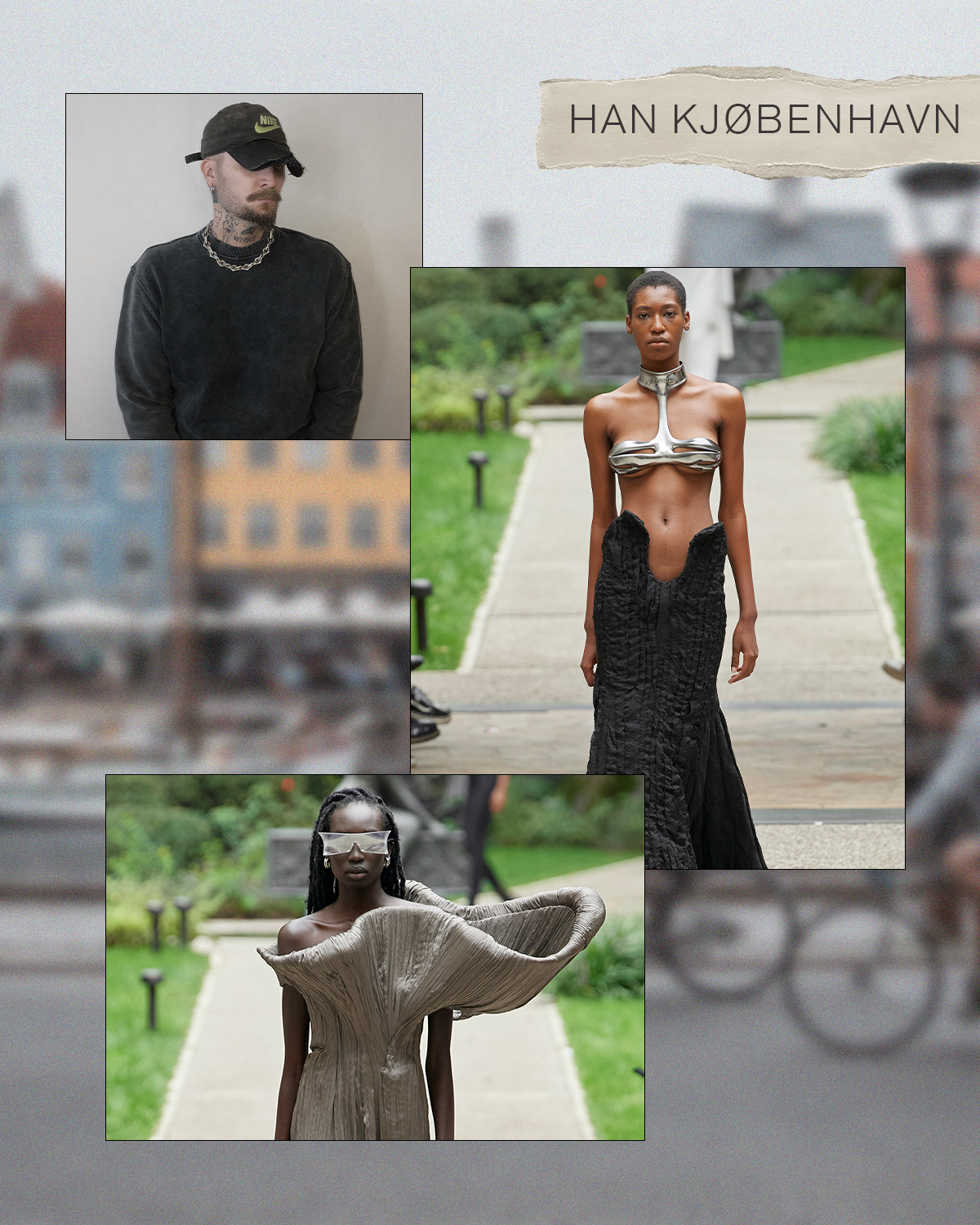
WHO: Jannik Wikkelsø Davidsen, founder and creative director of Han Kjøbenhavn
For those who are unfamiliar with your work, how long have you been in the fashion industry?
I was so inspired by the street style scene in Copenhagen that I decided I wanted to start designing. I founded Han Kjøbenhavn in 2008 and have been building the brand ever since.
What compelled you to start your label? How has the brand evolved since its founding?
I felt that I had a story to tell and a different way of telling it. I actually started designing eyewear because of my love and fascination for the harder shapes and almost sculptural expression. This evolved into creating seasonal ready-to-wear collections and runway collections.
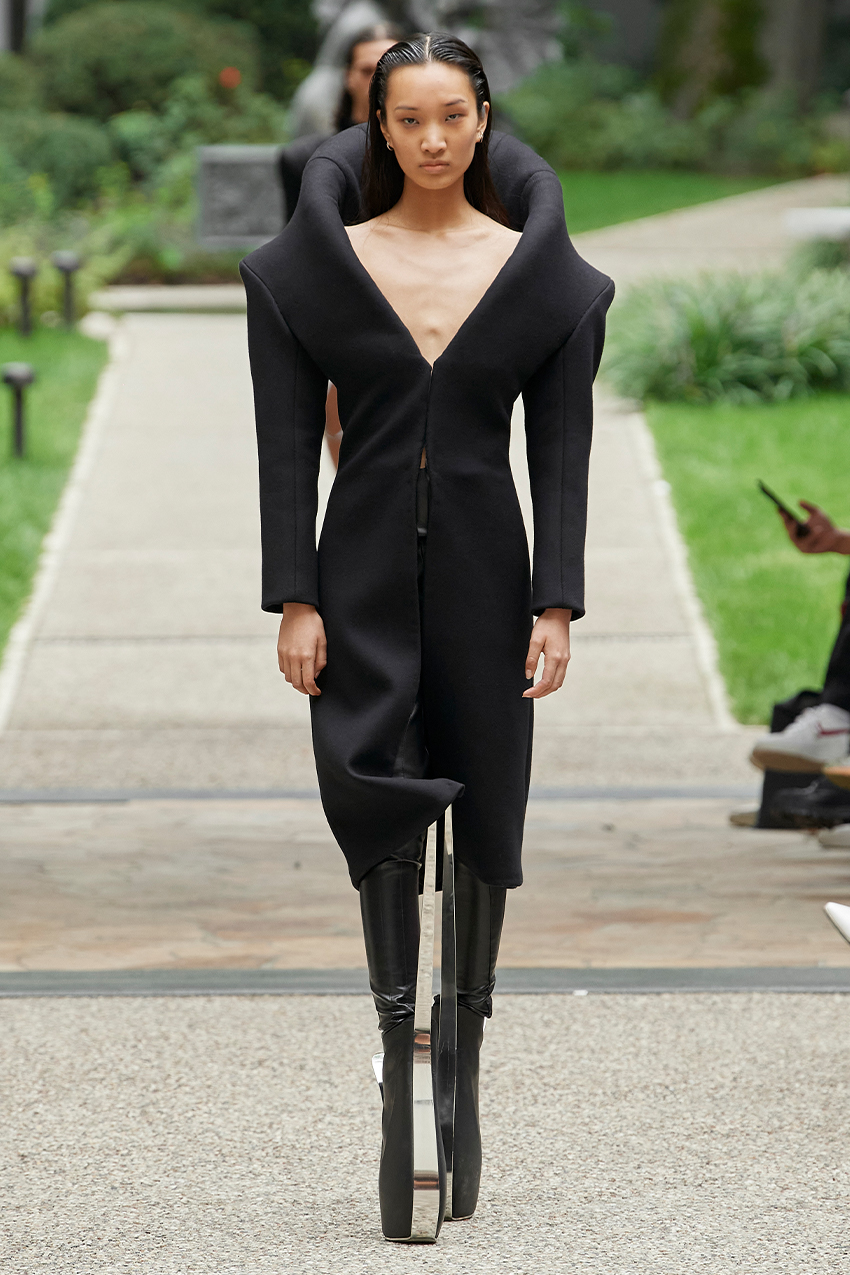
You just were at CIFF in Copenhagen showing your fall/winter 2023 collection. As a designer, why was it imperative you be a part of a trade show? And what's one thing you wish more people knew about the process of being a part of a trade show as a designer?
As a creative director, it wasn't my decision whether we should be at a trade show. However, being at CIFF was a great way to create brand exposure and traffic that allowed us to meet and connect with new people and a new audience.
Typically when we think about fashion capitals, people think of cities like Paris, NYC, and London. Why did you choose to show your work in Copenhagen over other fashion capitals? And how do you feel Copenhagen's creative scene is changing the fashion industry?
Normally, we showcase our season's creations in Milan, and then we also have a smaller showing in our showroom and for buyers at CIFF in Copenhagen. Obviously, I'm very connected to Copenhagen and Denmark, and it fuels my creativity. Still, I find it challenging to scale the business. That's why we combine and expand our creative scene beyond one city.
Besides all the budding talent, one thing that makes Copenhagen unique is its continued dedication to championing sustainability. As a designer, how do you define sustainable fashion? And how do you apply it to your own work?
Everything is about good behavior, whether you're referring to a human being or the way you produce your collections—you just have to be responsible. For me, choosing to be a sustainable brand is similar to being the best version of yourself. It's about aspiring for the best possible version of whatever you're creating and taking care of your surroundings in the process.
Regarding your work, please tell us a little about your recent collection. Where did you draw inspiration from? Are there any standout looks or trends you hope we'll take away from this collection?
I rarely get inspired by a specific thing. It is more about my emotional state at that moment in time. Of course, you get affected by your surroundings all the time and by the community around you, but when designing, I only look at myself, my opinions, and where I am in my emotions at that specific time. The brand was really born out of this need to transform some of the dark Danish surroundings, and even my own dark emotions, into something beautiful, and that's always the inspiration.
Lastly, what do you hope your legacy will be as a designer? How do you hope your work will contribute to cementing Copenhagen as a fashion capital?
My aesthetics are very Danish, but it is not Danish in how people precept it and how Denmark is usually "sold." All I am trying to do is connect emotions with people. Hopefully, the creations I make are something people can feel. If I can make people feel something they don't normally feel at that specific moment, then I've done my job well.
Next up, Prediction: These 10 Copenhagen Trends Will Define What Is Cool This Year

Jasmine Fox-Suliaman is a freelance writer and editor living in New York City. What began as a pastime (blogging on Tumblr) transformed into a lifelong passion for unveiling the connection between fashion and culture on the internet and in real life. Over the last decade, she's melded her extensive edit and social background to various on-staff positions at Who What Wear, MyDomaine, and Byrdie. More recently, she’s become a freelance contributor to other publications including Vogue, Editorialist, and The Cut. Off the clock, you can find her clutching her cell phone as she's constantly scrolling through TikTok and The RealReal, in search of the next cool thing.
-
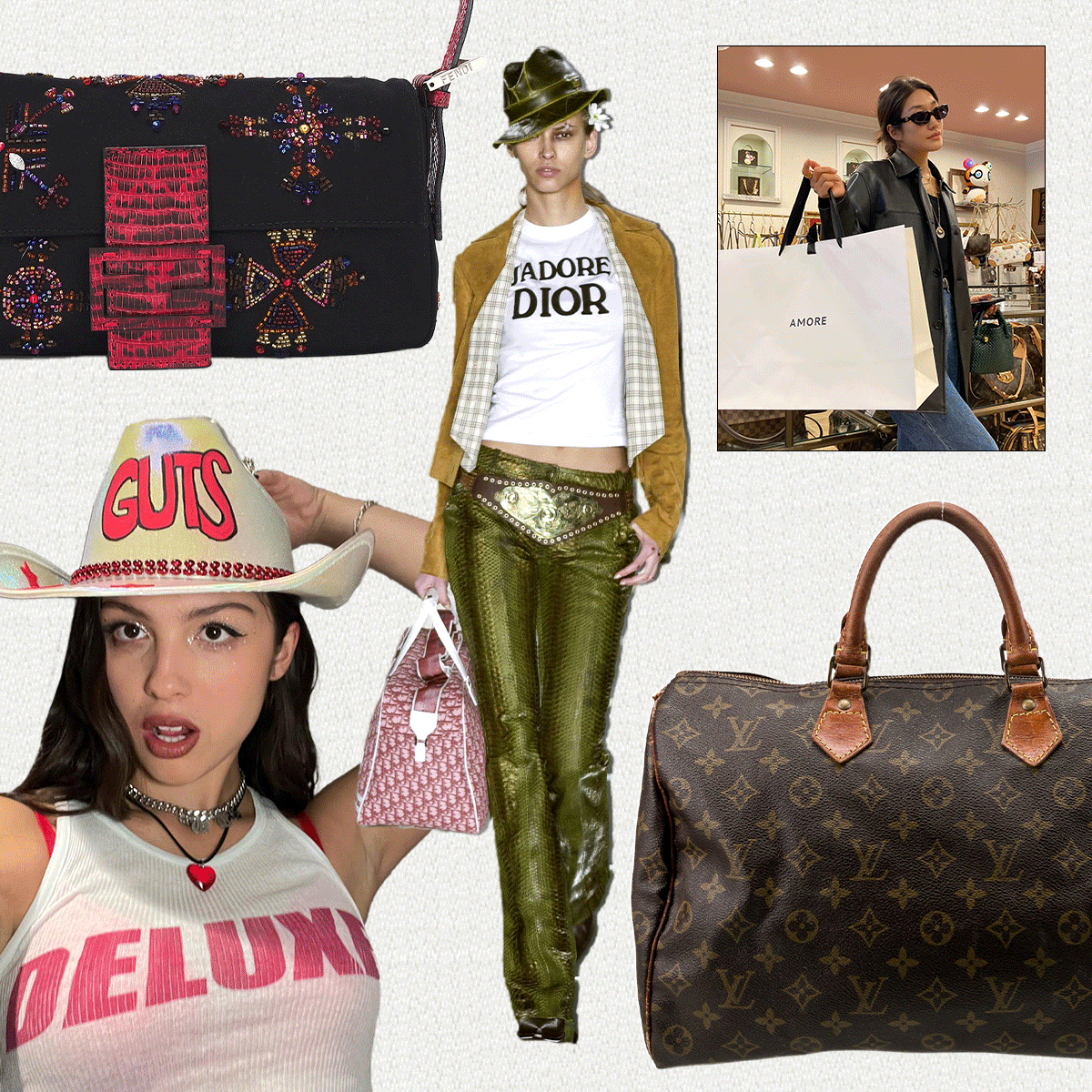 Save the Earth, But Make It Fashion: Gen Z's Secondhand Shopping, Explained
Save the Earth, But Make It Fashion: Gen Z's Secondhand Shopping, ExplainedRead our full secondhand report.
-
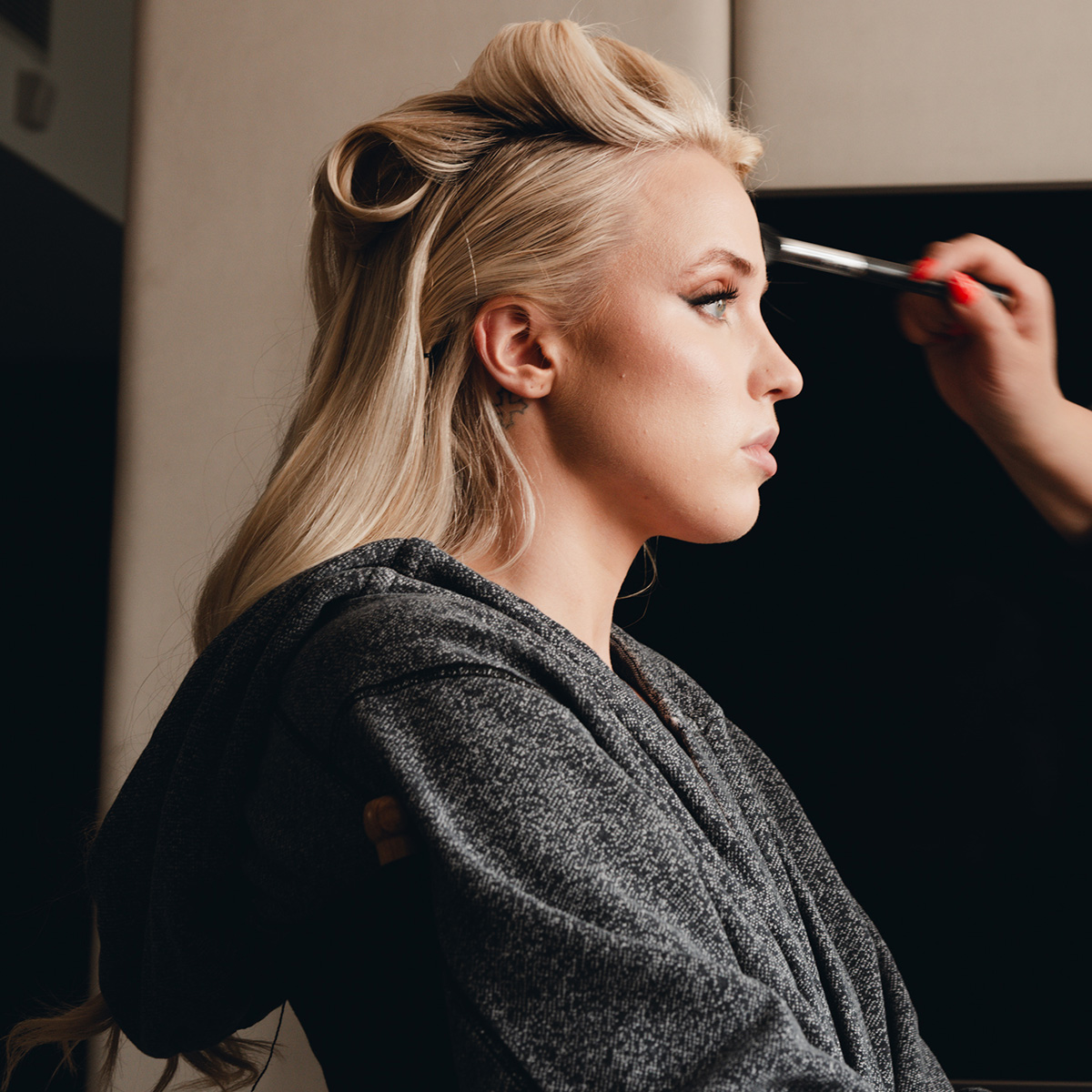 Hailey Van Lith Went Pro in Custom Coach, the Official Handbag Sponsor of the WNBA
Hailey Van Lith Went Pro in Custom Coach, the Official Handbag Sponsor of the WNBADetails inside.
-
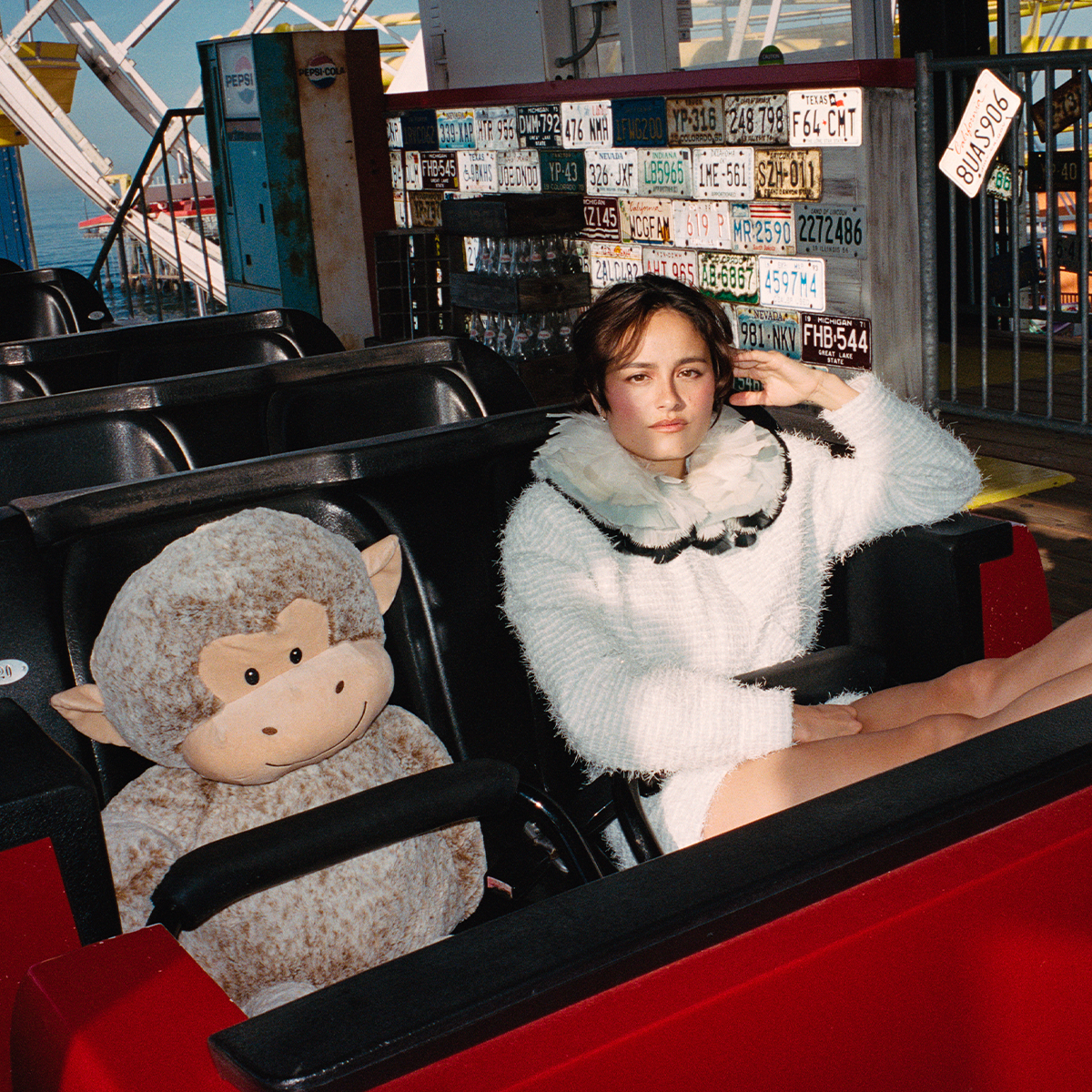 Chase Sui Wonders Demands Your Attention
Chase Sui Wonders Demands Your AttentionThe burgeoning actress came of age with Seth Rogen's movies. Now, she's starring in his latest project—The Studio, the Hollywood meta comedy now streaming on Apple TV+.
-
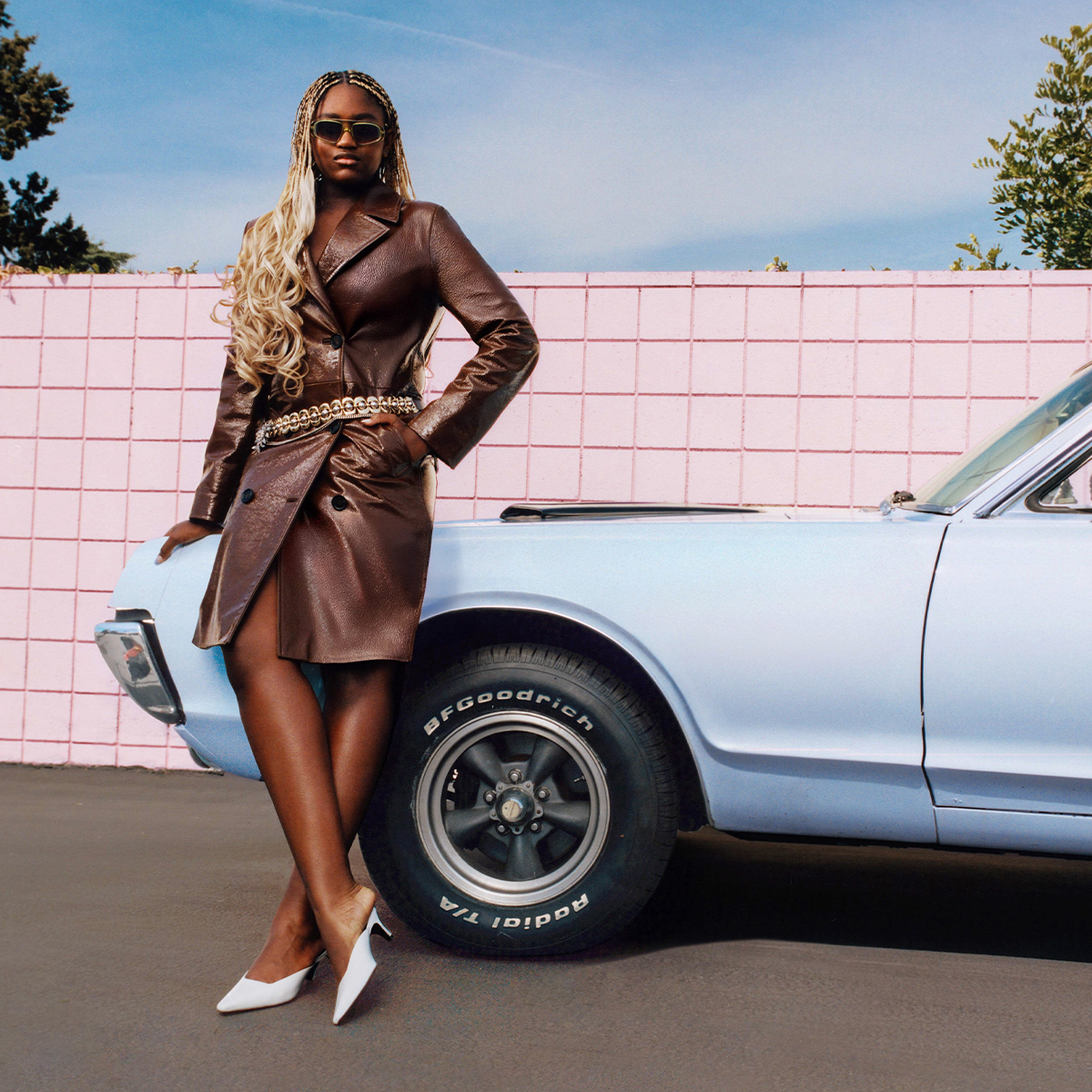 Reimagining Girlhood With Zaya Wade
Reimagining Girlhood With Zaya WadeAt just 17 years old, Zaya Wade is rewriting the narrative on what it means to be a Gen Zer.
-
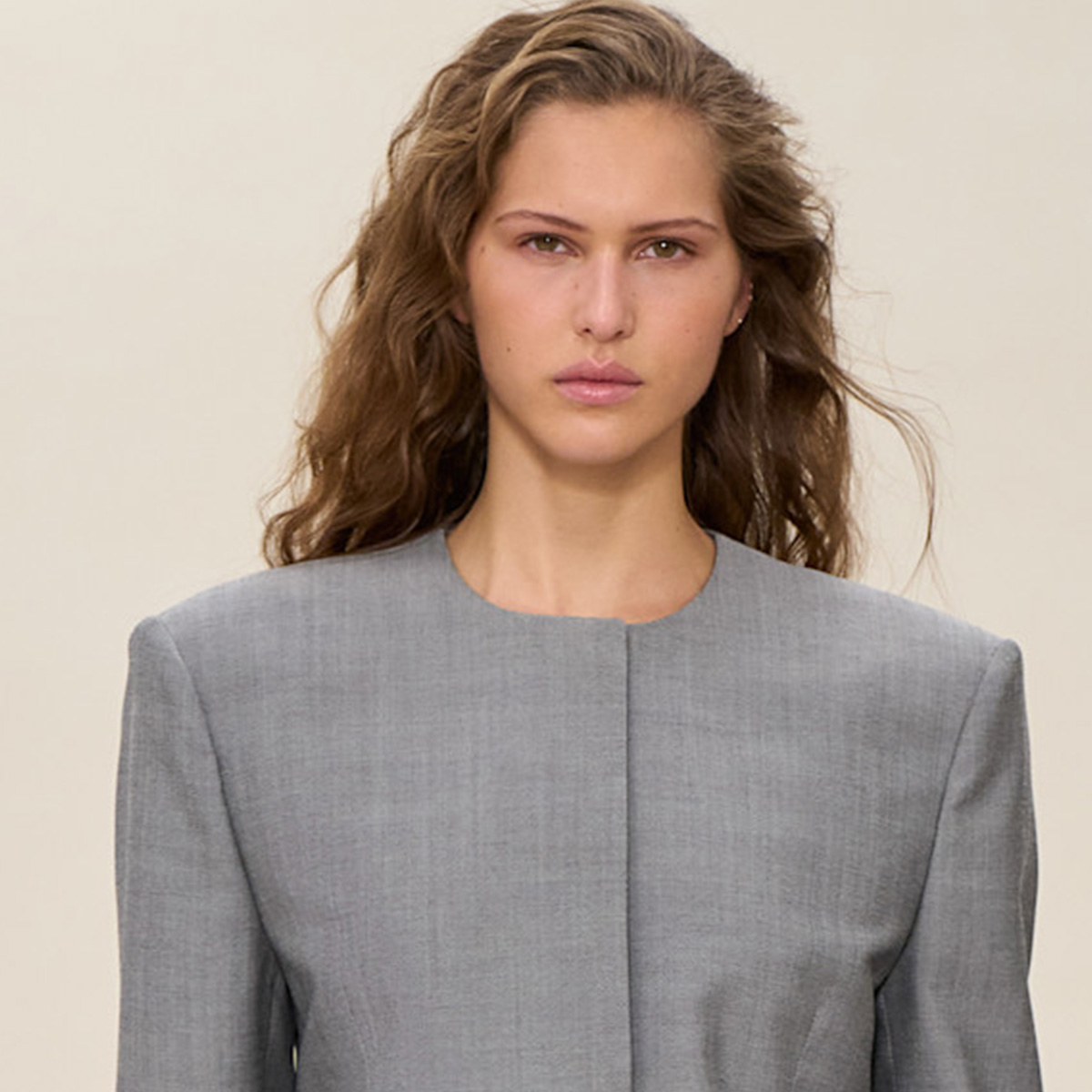 6 Fall 2025 Runway Trends I Already Found at Zara, H&M, and Mango
6 Fall 2025 Runway Trends I Already Found at Zara, H&M, and MangoAffordability's never looked so good.
-
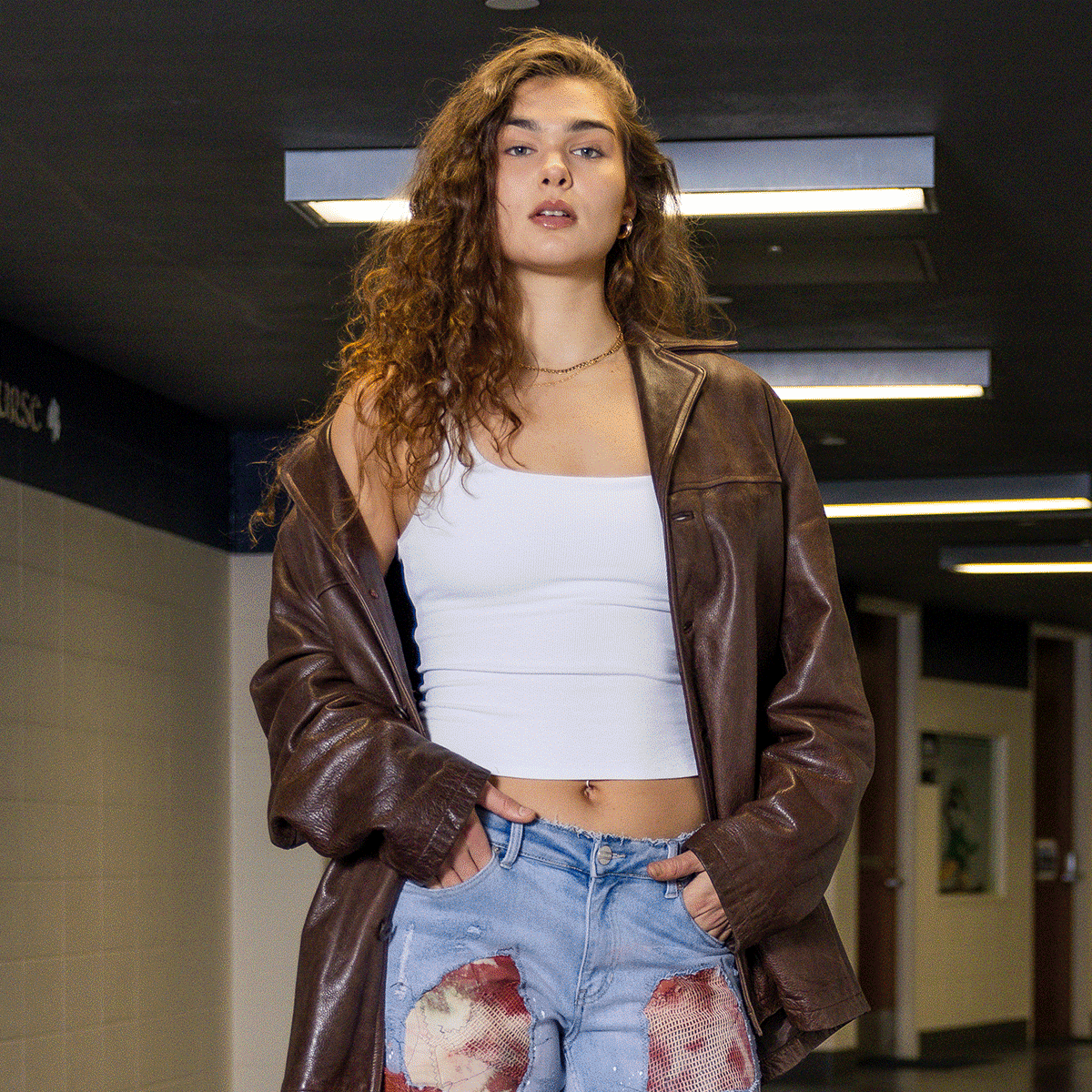 What Happens When College Basketball Embraces the Tunnel 'Fit?
What Happens When College Basketball Embraces the Tunnel 'Fit?I asked Notre Dame's Maddy Westbeld and Coach Niele Ivey.
-
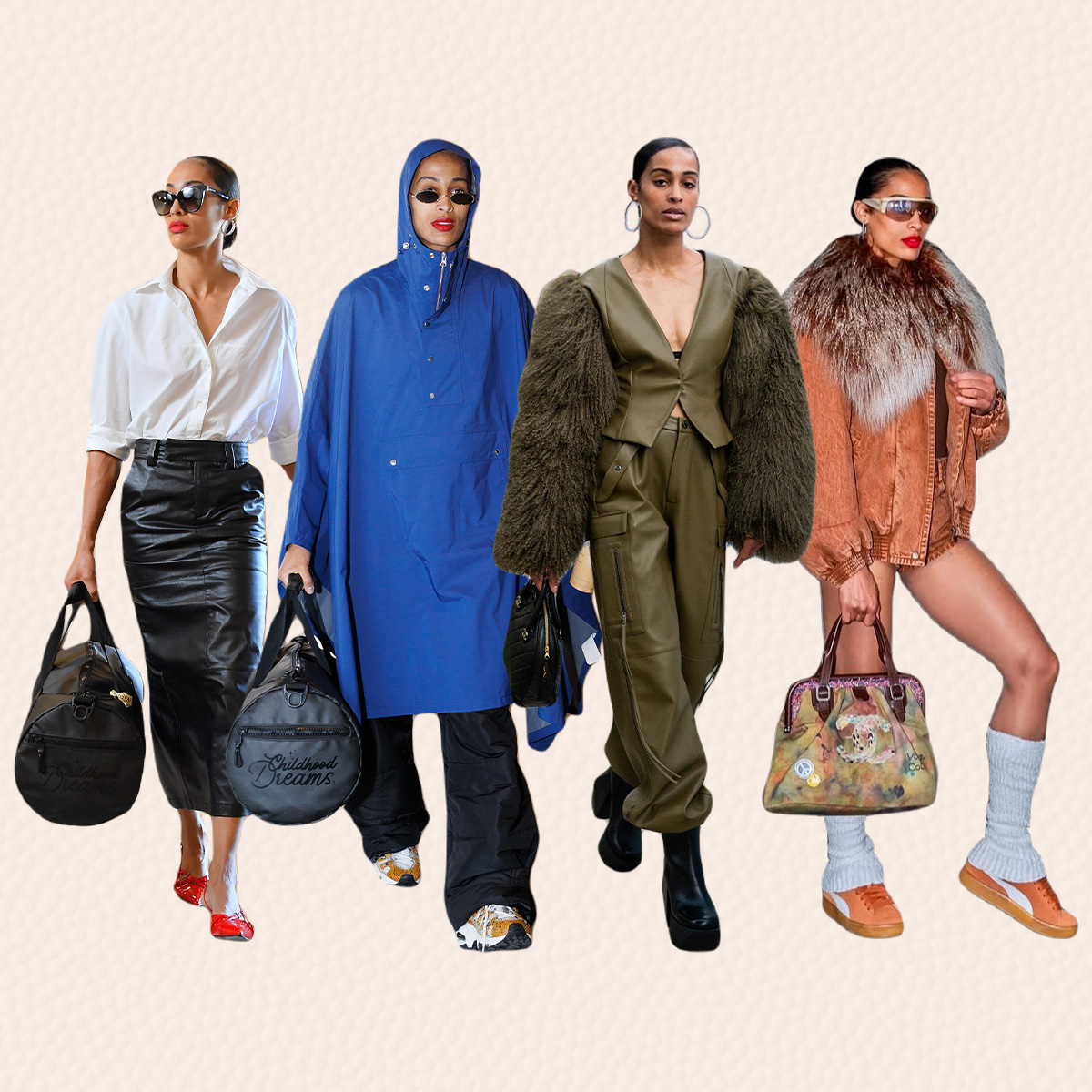 The Power of Styling in Sports
The Power of Styling in SportsIn conversation with Skylar Diggins-Smith and her stylist, Manny Jay.
-
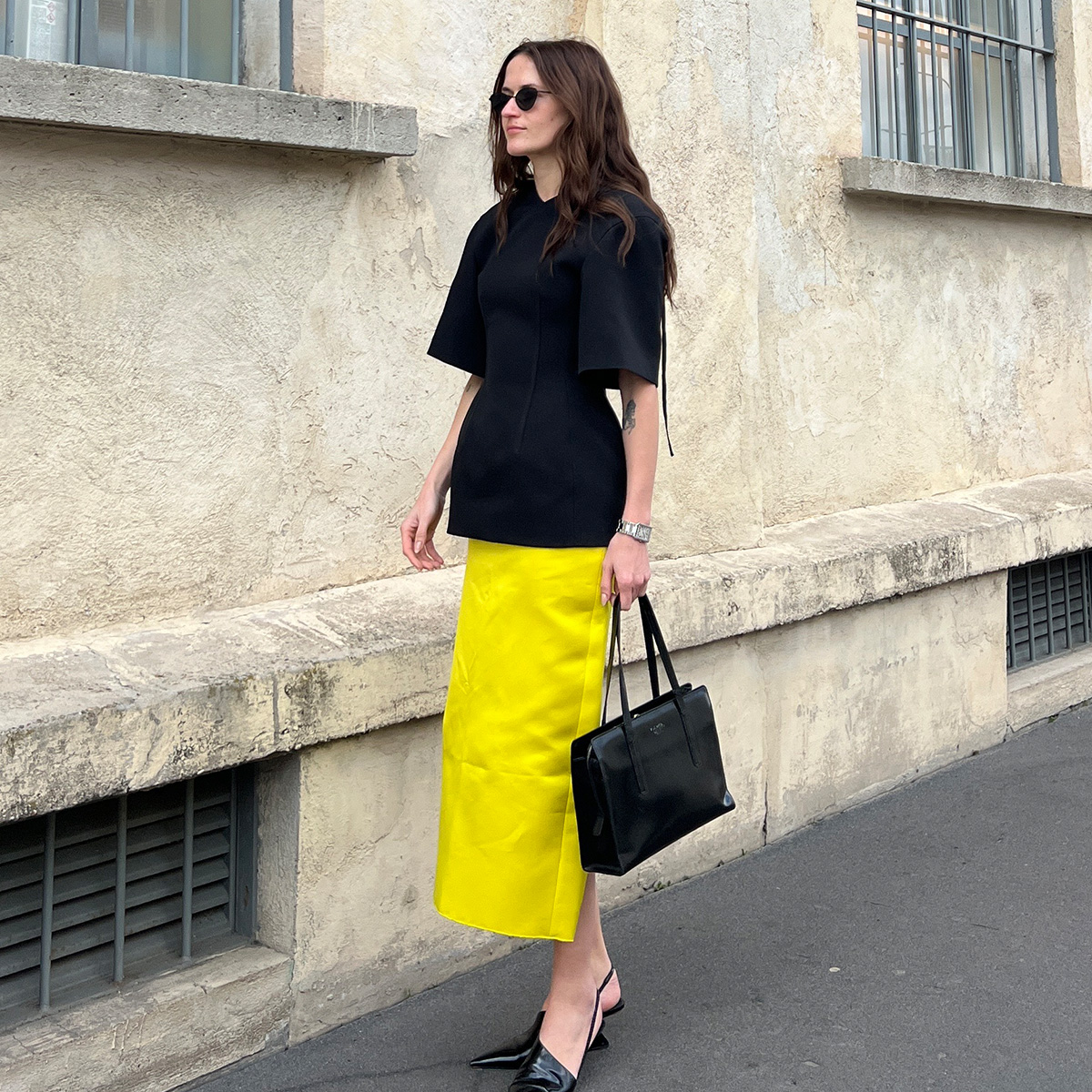 From Prada to COS—Here's Everything I Packed and Wore for Milan Fashion Week
From Prada to COS—Here's Everything I Packed and Wore for Milan Fashion WeekA full breakdown.
